

CTIO REU/PIA pages per year and projects
| Student & Institution | Mentors | Project Title |
|
Howard Beckley New Mexico Inst. of Mining & Technology |
Richard Elston Jack Baldwin |
Characterizing the IR Cross Disperser and Understanding the Temperature Variations in the 4m Dome |
|
Marc Kassis Willamette University |
Eileen Friel | CCD Photometry of the Old Open Cluster 092-SC18 |
|
Maritza Tavarez Hunter College of CUNY |
Richard Elston Chris Smith |
IR Properties of Supernova Remnants in the Magellanic Clouds |
|
Sarah Tuttle San Jose State University |
Malcolm Smith | Search for High-Redshift QSOs |
| Student & Institution | Mentors | Project Title |
|
Alex Athey Pomona College |
Malcolm Smith | Search for High-Redshift QSOs |
|
Jodi Schneider St. John's College |
Eileen Friel | LMC Star Clusters and X-ray Sources - a feasibility study |
|
Alejandro Soto Dartmouth College |
Eileen Friel | Integrated Properties of Milky Way Open Clusters |
|
Elizabeth Turner Georgia Inst. of Technology |
Nick Suntzeff | IR Photometry of Supernova 1987A |
|
Martin Osorio University of Chile, Santiago Roger Leiton University of La Serena |
Mark Phillips | Study of the Changing Sky Brightness at Cerro Tololo |
| Student & Institution | Mentors |
Project Title (Click to see more information) |
|
Jomel Atienza-Rosel California State University, Los Angeles |
Bob Schommer Nick Suntzeff |
Integrated Photometry of Globular Clusters in the LMC and M33 [4] |
|
Amanda Jefferson University of Maryland, College Park |
Chris Smith | Identifying SNRs in the Magellanic Cloud Emission-line Survey [5] |
|
Aaron Steffen University of Wisconsin, Eau Claire |
Nick Suntzeff Mark Phillips |
The Multicolor Light Curve of SN 1997ej [6] |
|
Patrick Welti Mankato State University |
Roger Smith Tom Ingerson |
Developing an All-Sky Monitor Camera System [7] |
| Student & Institution | Mentors | Project Title |
|
Juan Cortes University of Chile, Santiago |
Ron Probst Monica Rubio |
Near-IR Study of Magellanic Cloud Star-forming Regions |
|
The Centauri Group, composed of Javier Barahona, Danilo Castillo, Alejandra Peralta, & Sergio Pizarro University of La Serena, Chile |
Rene Mendez | Photometry of Nearby Open Clusters |
Two Chilean engineering students doing internships at CTIO also participated in the summer student program. Daniel Quevedo (University of Santa Lucía) worked on a quantum efficiency calibration unit, and Juan Pablo Gomez (University of Santa Lucía) worked on an image-tube protection circuit for the All-Sky camera.
| Student & Institution | Advisor |
Project Title (Click for more information) |
|
Jeremy Buss University of Wisconsin, Oshkosh |
Knut Olsen | A Comprehensive Look at LH72 in the Context of Constellation III [9] |
|
Jenny Greene Yale University |
Stefanie Wachter | LMC X-2: The Search for the Orbital Period [10] |
|
Jessica Kim-Quijano Towson University |
Don Hoard | The Orbital Period of the Double-lined Cataclysmic Variable Phe 1 [11] |
|
Alicia Soderberg Bates College |
Nick Suntzeff | The Evolution of SN1987A Debris: 12 Year Light Curves in UBVRIJHK [12] |
| Student & Institution | Advisor |
Project Title (Click for more information) |
|
Ricardo Demarco Pontificia Universidad Católica de Chile, Santiago |
Bob Schommer | Supernovae Type Ia and Their Host Galaxies [13] |
| Student & Institution | Advisor | Project Title |
|
Cecil Acevedo Universidad Técnica de Federico Santa María, Valparaiso |
Marco Bonati | A Graphical Unit Interface for the Voltage, Telemetry, and Temperature ARCON Card |
|
Mario Caceres Universidad Técnica de Federico Santa María, Valparaiso |
Roger Smith | Evaluation of a CCD Imager for All-Sky Cloud and OH Monitoring |
| Student & Institution | Advisor |
Project Title (Click for more information) |
|
Melanie Blackburn West Virginia University |
Eric Rubenstein | A Search for Dwarf Novae in Globular Cluster 47 Tucanae [15] |
|
John Bright Mesa State College, Colorado |
Knut Olsen | Identifying the Globular Cluster Systems of the Sculptor Group [16] |
|
Ben Johnson University of California, Los Angeles |
Stefanie Wachter | A Search for the Orbital Period of LMXB X0614+091 [17] |
|
Tanya Tavenner University of Washington |
Donald Hoard | Optical Counterparts of X-ray Sources in the SMC [18] |
| Student & Institution | Advisor |
Project Title (Click for more information) |
|
Axel Bonacic Pontificia Universidad Católica de Chile, Santiago |
Bob Schommer | Peculiar Motions with a Set of SN Ia Distances [19] |
|
Juan Seguel Universidad de Concepción |
Chris Smith | Testing completeness of and refining the NGSS residual search methods [20] |
| Student & Institution | Advisor | Project Title |
|
Felipe Daruich Universidad Católica de Valparaiso |
Max Boccas | Study of Vibrations in the Blanco 4-m Telescope |
|
Mario Caceres Universidad Técnica de Federico Santa María, Valparaiso |
Roger Smith | Image Processing and Animation for the Cloud Camera Feasibility Study |
| Student & Institution | Advisor |
Project Title (Click for more information) |
|
Gabriel Brammer Williams College, Massachusetts |
Stefanie Wachter, Donald Hoard | The Search for the Orbital Period of LMXB 4U1556-605 [22] |
|
Kathy Cooksey Valparaiso University, Indiana |
Stefanie Wachter, Donald Hoard | Star Formation in the Isolated Molecular Cloud NGC 1788 [23] |
|
Shadrian Holmes College of Charleston, South Carolina |
Chris Smith, Knut Olsen | HII Region Analysis in Dwarf Irregular Galaxies: The Slog and HIIphot [24] |
|
Rodolfo Montez University of Texas, Austin |
Hugo Schwarz, Romano Corradi | Kinematics of the Bipolar Planetary Nebula Sa 2-237 [25] |
| Student & Institution | Advisor |
Project Title (Click for more information) |
|
Jorge Cuadra Pontificia Universidad Católica de Chile, Santiago |
Nick Suntzeff | Optical Light Curve of SN2000cx [26] |
|
Erika Labbe Pontificia Universidad Católica de Chile, Santiago |
Nick Suntzeff | Type Ia SN 1999ac: The Most Complete Optical and IR Light Curves Ever Obtained for Such an Object [27] |
| Student & Institution | Advisor | Project Title |
|
Constanza Araujo Universidad Católica de Valparaiso |
Max Boccas | Filter Transmission Measurements Setup |
| Student & Institution | Advisor | Project Title | |
 |
Pamela Baca University of Colorado, Denver |
Dara Norman | Search for Galaxy Clusters in the Fields of QSOs / Follow_up Observations of Deep Lens Survey Transients [28] |
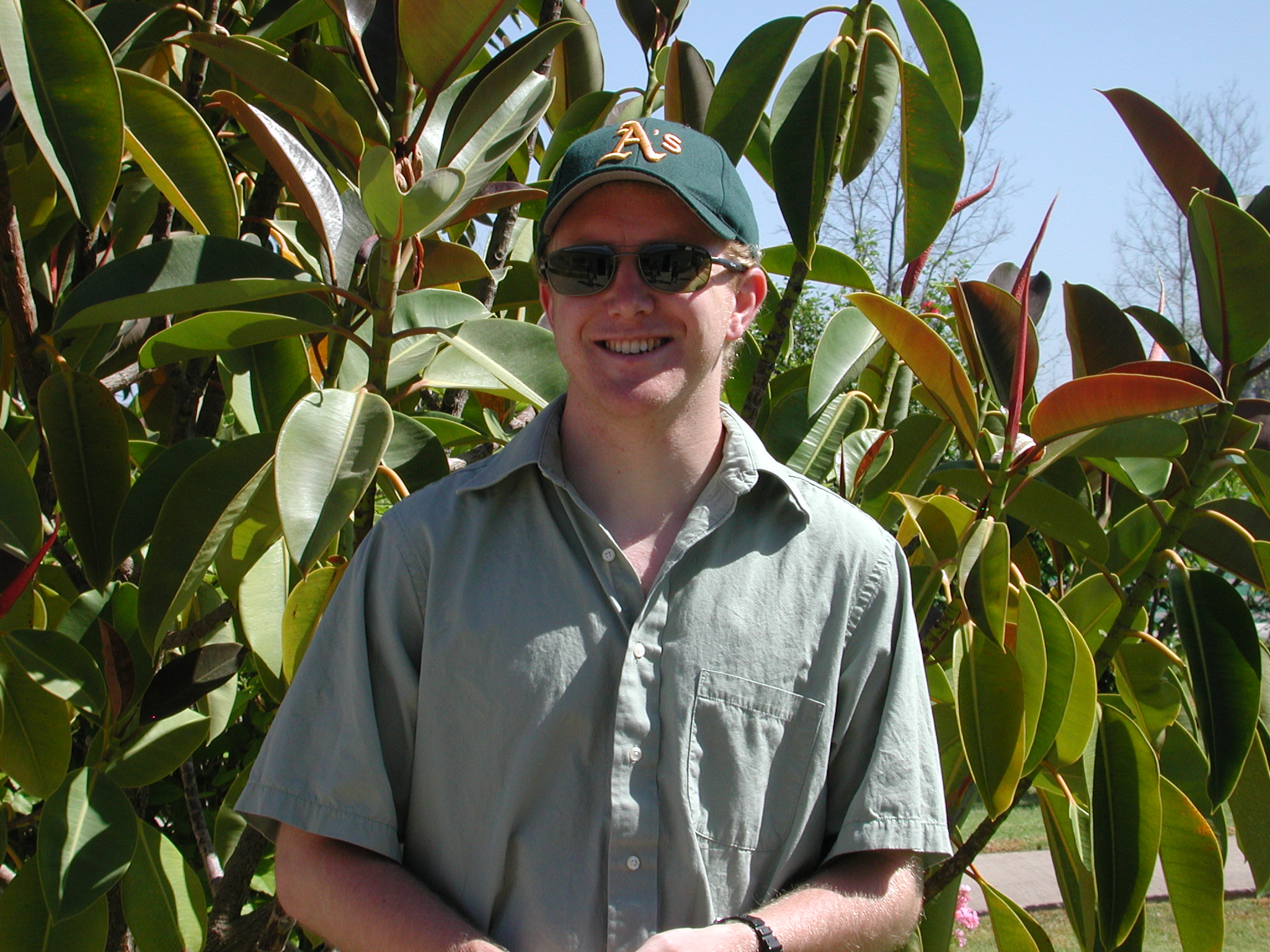 |
Jeffrey Carlin San Francisco State University |
Chris Smith | Optical Studies of the Vela Bullets [29] |
 |
Tucker Freismuth College of Charleston |
André Tokovinin | From Binaries to Triples [30] |
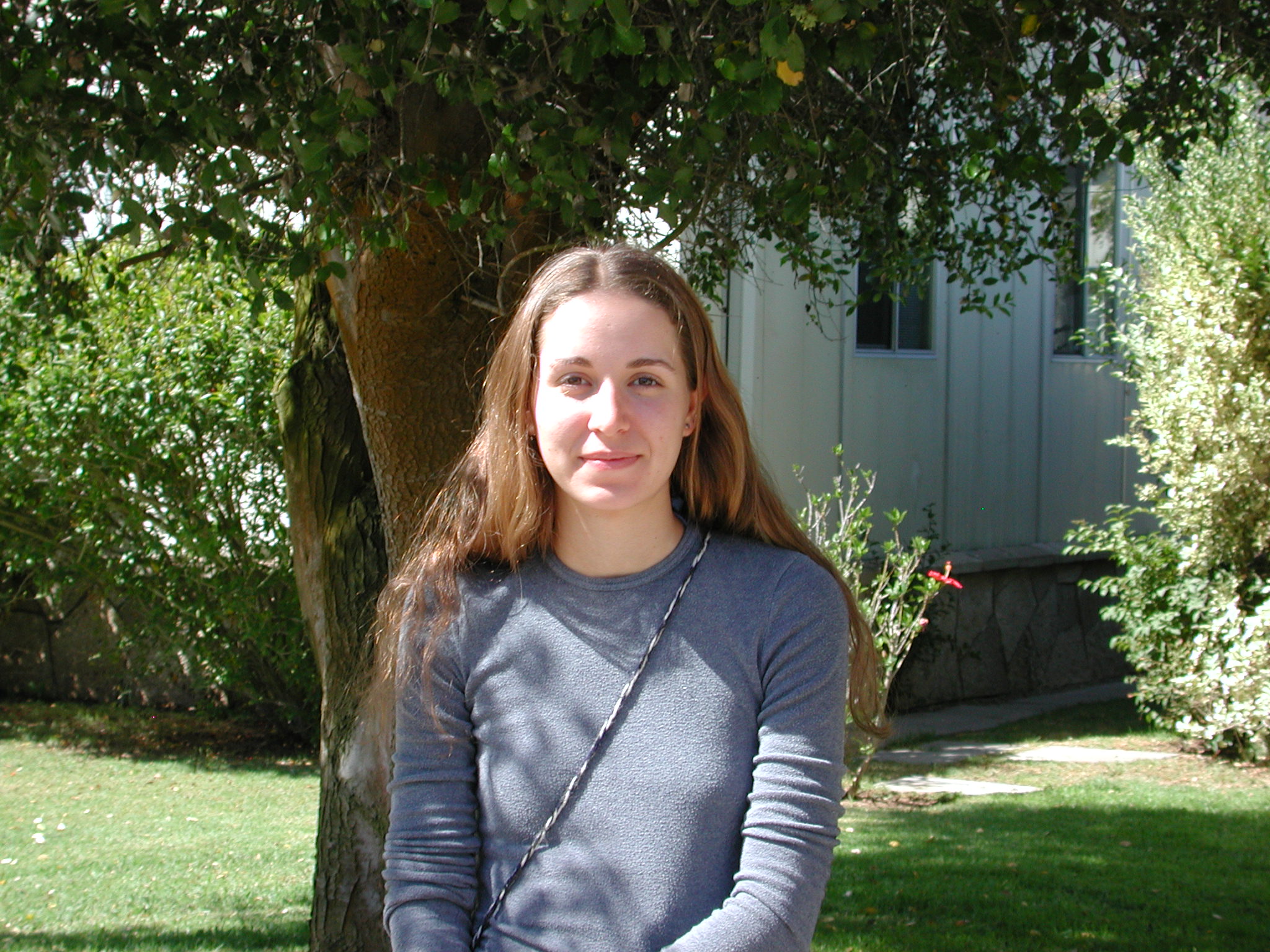 |
Colette Salyk Mass. Institute of Technology |
Knut Olsen | The Disk Tilt of the LMC [31] |
| Student & Institution | Advisor | Project Title | |
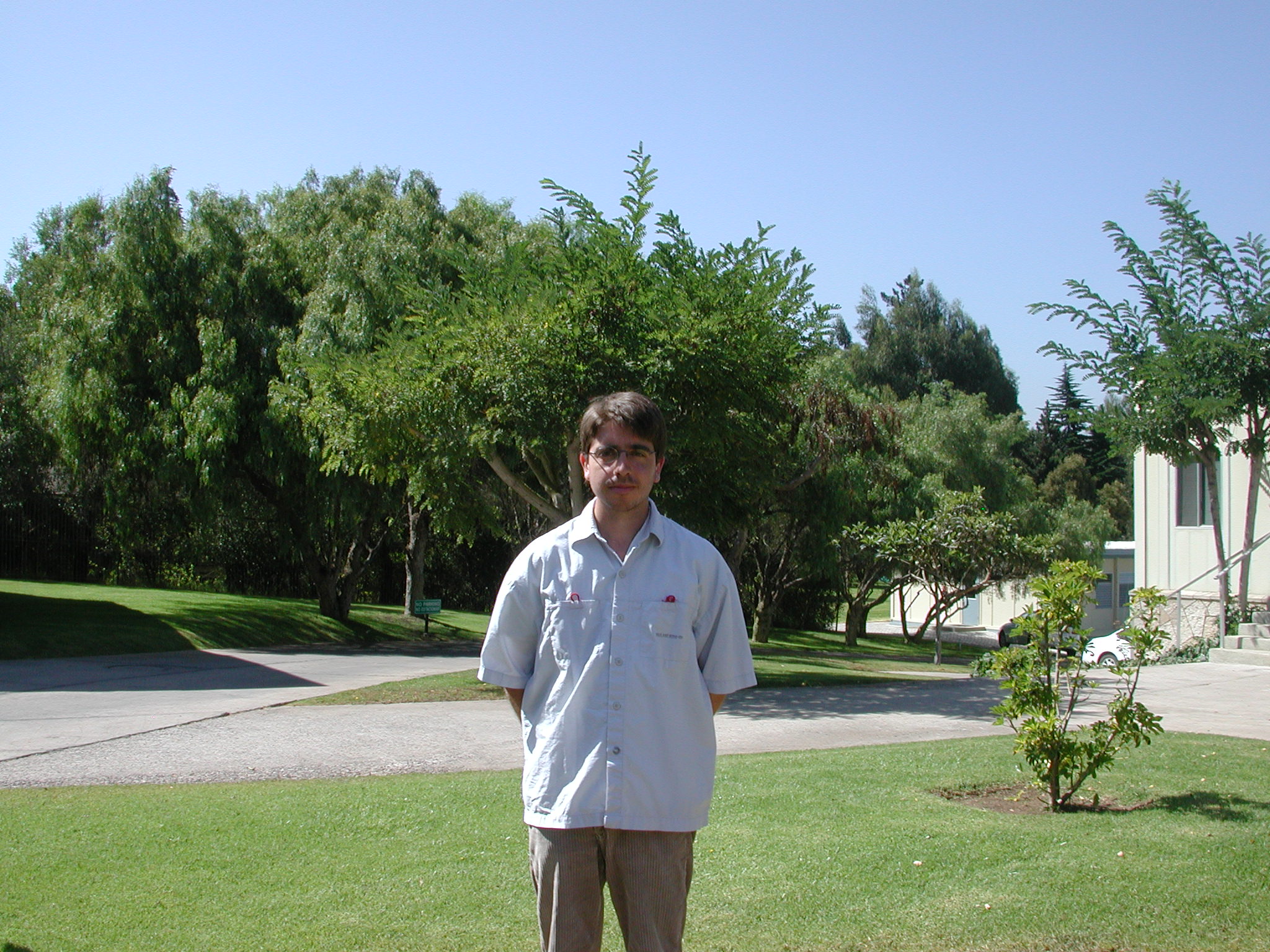 |
Marcelo Mora Pontificia Universidad Católica de Chile, Santiago |
Nick Suntzeff | K-correction Calculations for Type Ia Supernovae [32] |
 |
Sergio Vera Pontificia Universidad Católica de Chile, Santiago |
Nick Suntzeff | The Darkness of the Chilean Night Sky [33] |
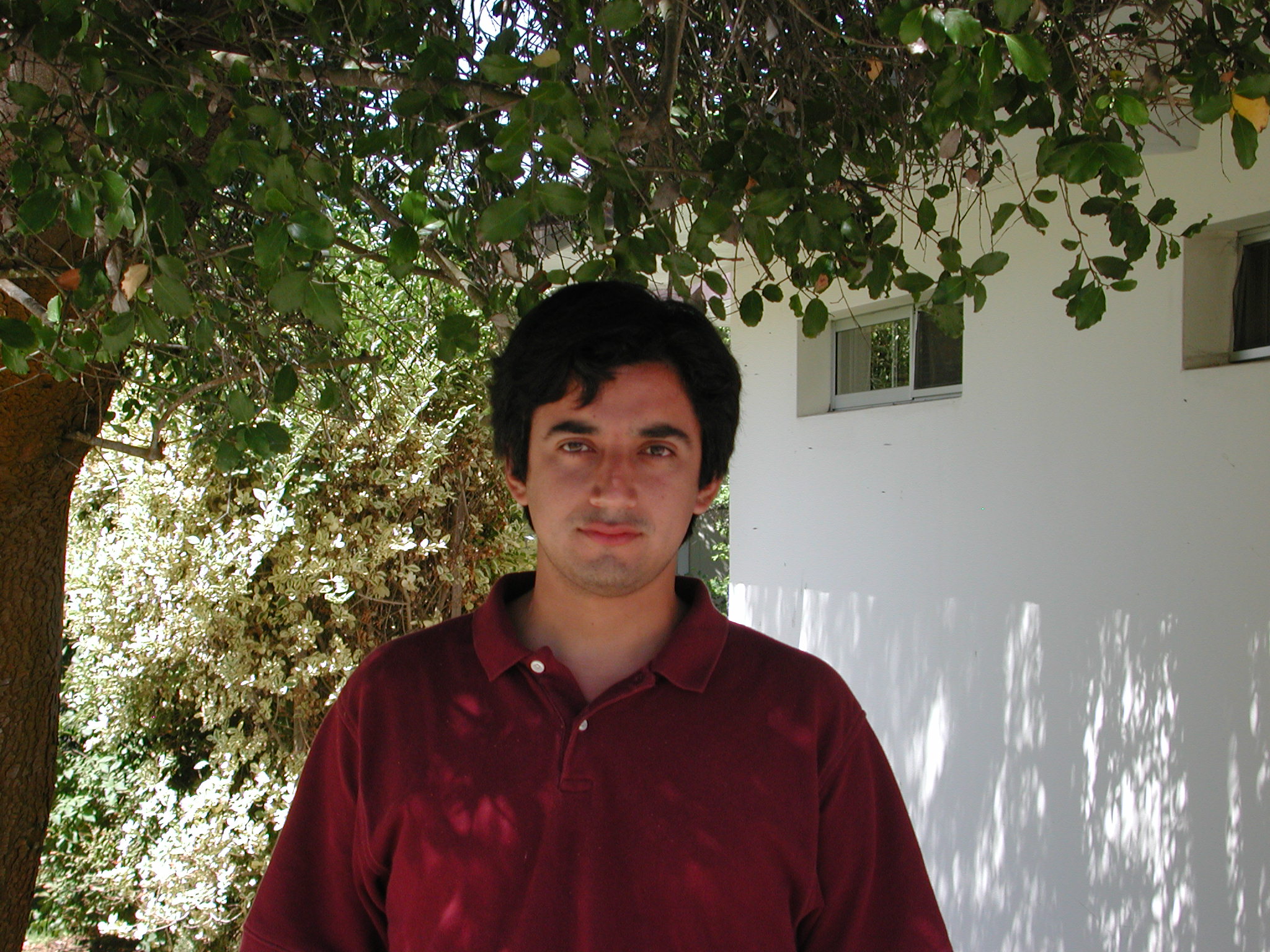 |
Miguel Verdugo Pontificia Universidad Católica de Chile, Santiago |
Nick Suntzeff | Precision photometry for Type Ia supernovae [34] |
| Student & Institution | Advisor | Project Title | |
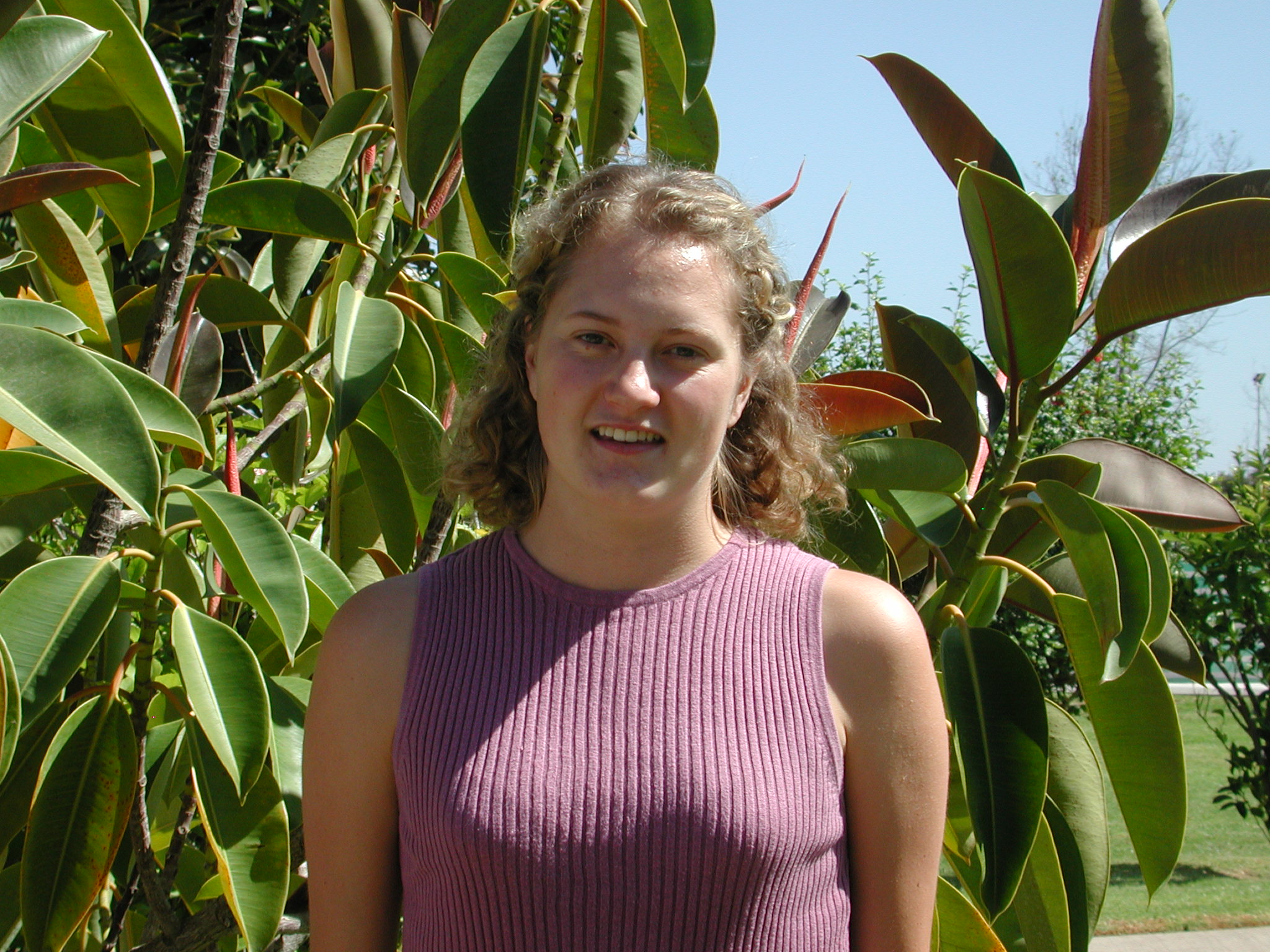 |
Amber Young Middlebury College, Vermont |
Nicole van der Bliek & Bob Blum |
Infrared Spectra of SiO Masing AGB Stars in the Galactic Bulge [35] |
| Student & Institution | Advisor | Project Title | |
 |
Carey Borghi University of Wyoming |
Knut Olsen | The Warp in the Large Magellanic Cloud [36] |
 |
Katherine Guenthner University of Texas at Austin |
Hugo Schwarz |
3D Photoionization Models of Planetary Nebulae [37] |
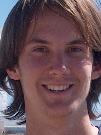 |
Ryan Peterson Lawrence College |
Hugo Schwarz | Orientation Effects in Bipolar Planetary Nebulae [38] |
 |
Lara Pierpoint University of California at Los Angeles |
Bernadette Rogers | The Young Binary System CO Orionis [39] |
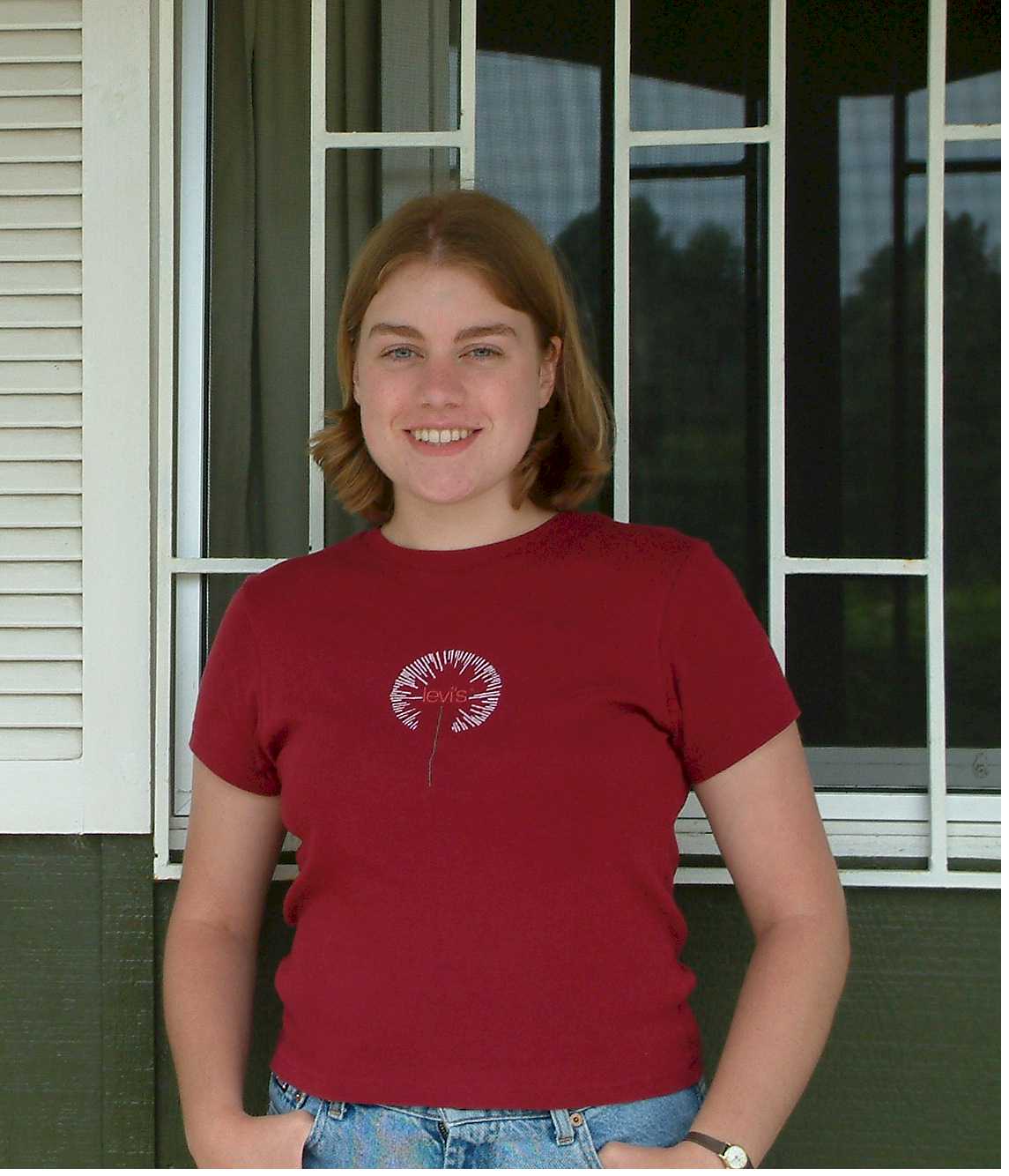 |
Rebecca Wilcox University of Washington |
Dara Norman | Galaxy Clusters in the Deep Lens Survey [40] |
| Student & Institution | Advisor | Project Title | |
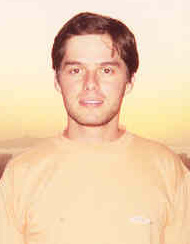 |
Rodrigo Fernandez Pontificia Universidad Católica de Chile, Santiago |
Hugo Schwarz | Velocity Fields in FLIERS in NGC 7009 [41] |
 |
Abner Zapata Universidad de Concepción |
Nick Suntzeff | The Unusual Supernova 2002bo [42] |
| Student & Institution | Advisor | Project Title | |
 |
Rebecca Barlow Mt. Holyoke College |
Andrei Tokovinin | From Binaries to Triples [43] |
|
|
Luke Galli Colorado College |
Alan Whiting and Linda Schmidtobreik | Cataclysmic Variable Stars [44] |
 |
Alice Globus Wells College |
Dara Norman | Deep Lensing Survey follow-up [45] |
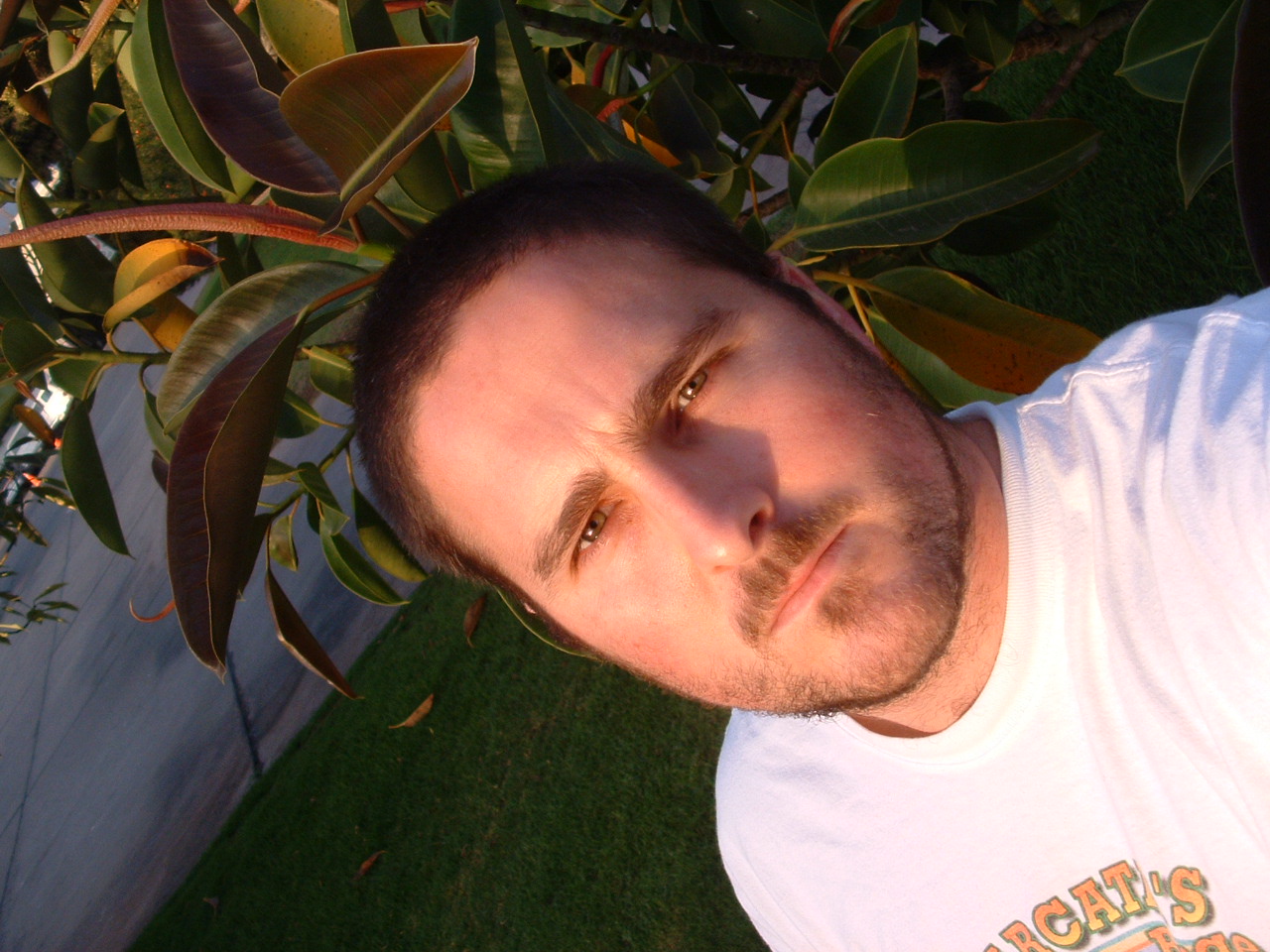 |
Ethan Knox Humboldt State University |
Nicolas Suntzeff | Photometry of Nearby Supernovae [46] |
|
|
Melissa Rice Wellesley College |
Hugo Schwarz | 3D Ionization Codes for Planetary Nebulae [47] |
 |
Kyle Walker Ohio State University |
Marcel Bergman and James Turner | E+A Galaxies [48] |
| Student & Institution | Advisor | Project Title | |
 |
Javier Fuentes Universidad de La Serena |
Hugo Schwarz, Hektor Monteiro and Alan Whiting | Planetary Nebulae interactions with the ISM [49] |
|
|
Bárbara Rojas Universidad de Chile |
Bryan Miller | Ages, Metallicities and Kinematics of Nuclei in Fornax dEs [50] |
| Student & Institution | Advisor | Project Title | |
 |
Sonia Aggarwal Haverford College |
Nick Suntzeff | Photometry of Eta Carinae [51] |
|
|
Claire Bendersky Mt. Holyoke College |
Hugo Schwarz | The Planetary Nebula NGC 6543 [52] |
|
|
Ben Brandvig University of Washington |
Bernadette Rodgers, Nicole van der Bliek and Sandrine Thomas |
Herbig Ae/Be Stars [53] |
|
|
AJ Carver University of Wisconsin-Madson |
Linda Schmidtobreick and Alan Whiting |
Suspected SW Sextantis Stars [54] |
|
|
Betsy Mills Indiana University |
Hugo Schwarz | Extinction Towards Planetary Nebulae [55] |
|
|
Dylan Semler Macalester College |
Malcom Smith, Hugo Schwarz and Nicholas Suntzeff |
The Night Sky Brightness at CTIO [56] |
| Student & Institution | Advisor | Project Title | |
|
|
Laura Pérez Universidad de Chile |
Malcom Smith | Red Quasars [57] |
|
|
Omar Valdivia Universidad de Concepción |
Chris Smith and Sean Points | The Energy Balance of LMC-1 [58] |
| Student & Institution | Mentor(s) | Project Title | |
|
|
Matthew Klimek Rutgers University |
Sean Points & Chris Smith | Multi-Wavelength Investigation of Newly Discovered SNRs in the LMC [59] |
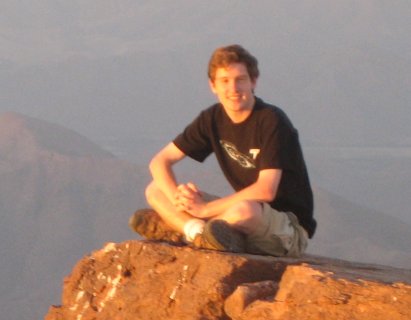 |
Drew Newman Washington University in St. Louis |
Armin Rest | A difference Imaging method for Extracting Light Echo Fluxes with an Application to SN 1987A [60] |
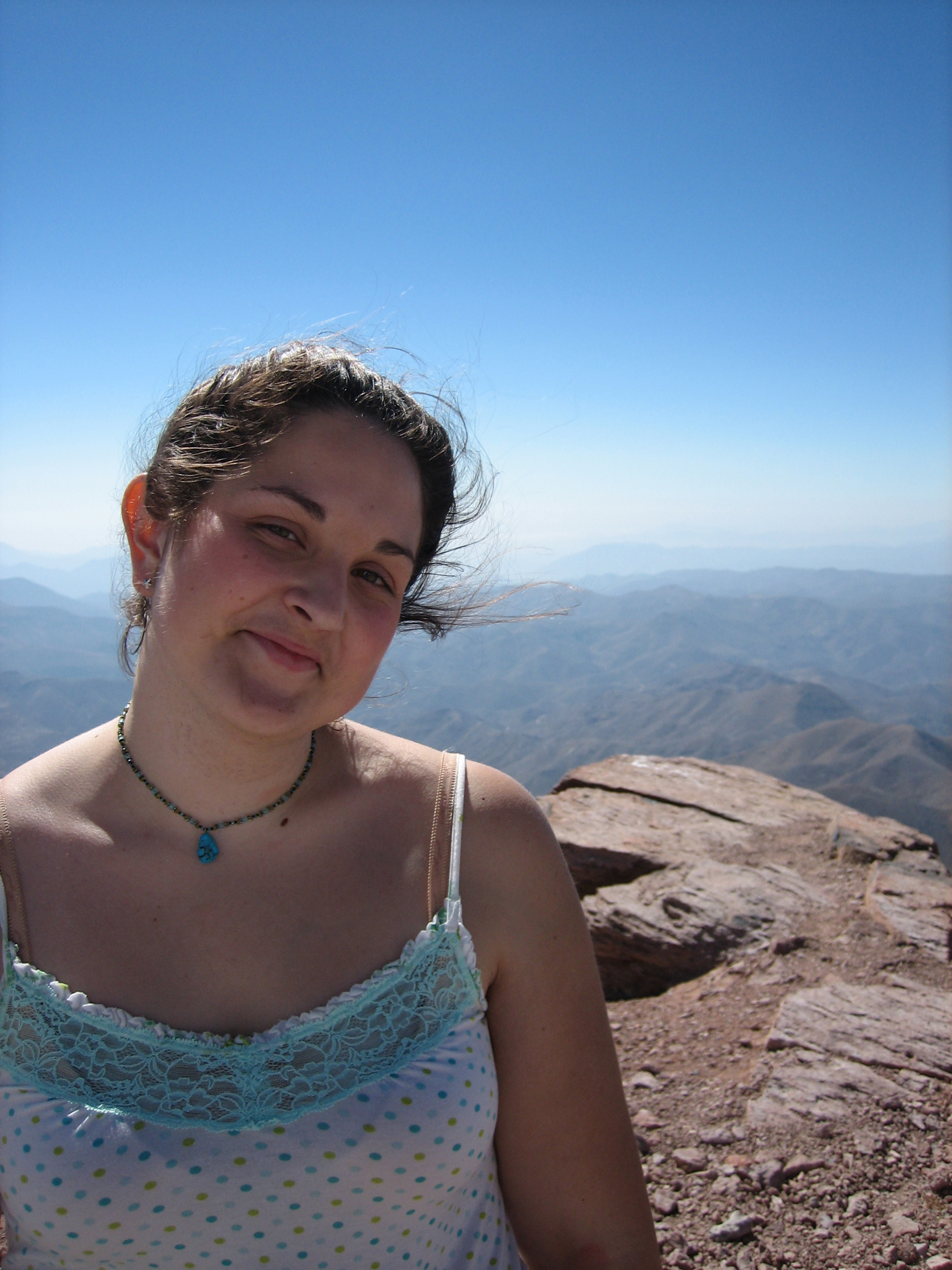 |
Gwen Rudie Dartmouth College |
Bryan Miller | The Formation of a dE Nucleus Caught in the Act [61] |
 |
Anne Sweet Macalester College |
Bernadette Rodgers & Greg Doppmann | Near infrared spectra of Herbig Ae/Be double stars [62] |
 |
Brad Tucker Notre Dame |
Knut Olsen & Bob Blum | Do the LMC and Milky Way Globular Clusters Share a Common Origin? [63] |
|
|
Allison Widhalm University of Southern California |
Stella Kafka | WIYN Open Cluster Study: Long Period Variables in NGC 2141 [64] |
| Student & Institution | Mentor(s) | Project Title | |
|
|
Maria Jose Cordero Pontificia Universidad Catolica de Chile |
Nicole van der Bliek & Sandrine Thomas |
Searching for Herbig Ae/Be multiples [65] |
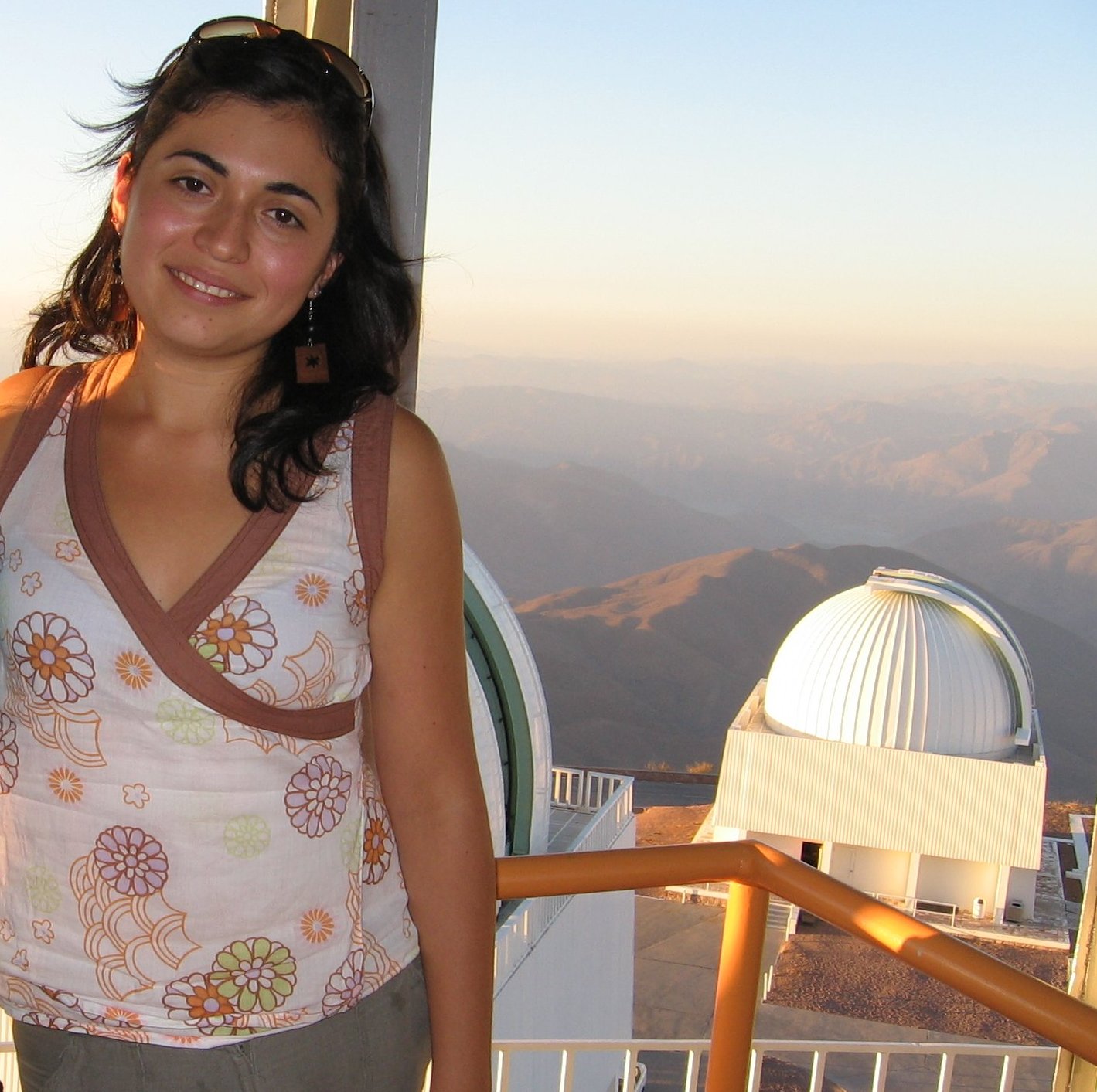 |
Renee Mateluna Universidad de Concepcio³n |
Hugo Schwarz & Joey Richards | Properties of Planetary Nebulae [66] |
 |
Guillermo Damke Universidad de La Serena |
Armin Rest | Probing Dust Structures with Light Echos [67] |
| Student & Institution | Mentor(s) | Project Title | |
|
|
Rachel Anderson University of Wisconsin - Eau Claire |
Stella Kafka & Armin Rest (CTIO) | The Variables of ESSENCE [68] |
|
|
Cassy Davison Norfolk State University |
Etienne Artigau (Gemini) | Cool companions to nearby stars [69] |
|
|
Stephanie Golmon Principia College |
Stella Kafka (CTIO) | Studying variables in old open star clusters [70] |
|
|
Daniel Harsono U. of California Los Angeles |
Roberto de Propris (CTIO) | The z-band Luminosity Function of Cluster Galaxies at z=0.32 [71] |
|
|
Scott Henderson Lewis & Clark College |
Bryan Miller (Gemini) | Ages and Metallicities of the Nuclei of Dwarf Elliptical Galaxies [72] |
|
|
Aisha Mahmoud U. of Puerto Rico - Mayaguez |
Armin Rest (CTIO) | Search for light echoes in the LMC [73] |
| Student & Institution | Mentor(s) | Project Title | |
|
|
Claudia Araya Pontificia Universidad Catolica de Chile |
Nicole van der Bliek (CTIO) & Bernadette Rogers (Gemini) |
Determining the binarity of Herbig Ae/Be objects [74] |
|
|
Rodrigo Hinojosa Universidad Catolica del Norte, Antofagasta | Sean Points & Chris Smith (CTIO) |
Assessing the Flux-Calibration of the Magellanic Cloud Emission Line Survey [75] |
| Student & Institution | Mentor(s) | Project Title | |
|
|
Crow-Willard, Emma Occidental College |
Chris Miller (CTIO) | The brightest cluster galaxy catalogue and density correlations analysis |
|
|
Lynch, Emily Dartmouth College |
Roberto de Propris (CTIO) & Michael West (ESO) |
Globular clusters in NGC3370 |
|
|
Mares, Peter Cornell University |
Roberto de Propris, Craig Harrison & Alistair Walker(CTIO) |
Characterizing the phase space of our galactic halo by using Blue Horizontal Branch stars as distance indicators |
|
|
Misra, Amit Case Western Reserve University |
Percy Gomez (Gemini) | Impact of Galaxy Cluster Mergers on Radio Galaxies |
 |
Plunkett, Adele Middlebury College |
Simon Schuler (CTIO) | Iron abundances on open cluster dwarfs: Pleiades |
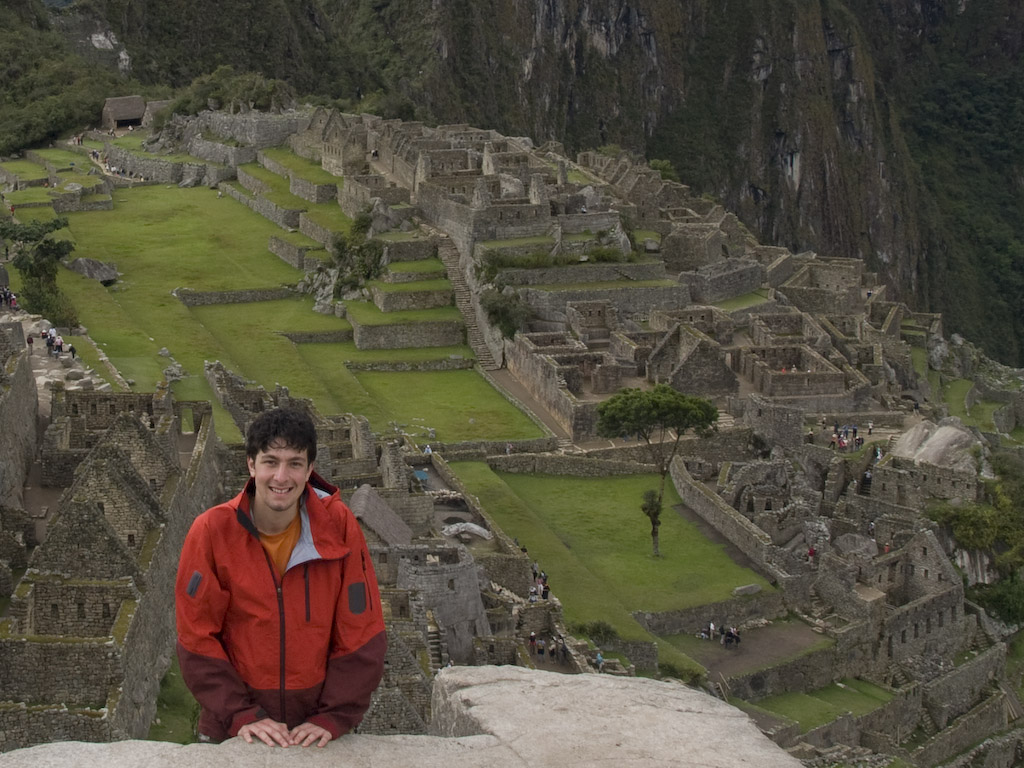 |
Schenker, Matt Dartmouth College |
Linda Schmidtobreick (ESO) & Stella Kafka (SSC) |
Search for SW Sextantis Cataclysmic Variables |
| Student & Institution | Mentor(s) | Project Title | |
|
|
Campos Macarena Universidad de Concepcion |
Susan Ridgway (CTIO) | HST imaging observations of z~1 radio sources and their radio-optical alignments |
|
|
Regis Cartier Ugarte Universidad de Chile |
Malcolm Smith (CTIO) | Spectroscopy of red x-ray selected quazars |
| Student & Institution | Mentor(s) | Project Title | |
|
|
Becker, Tracy Lehigh University |
Tim Abbott (CTIO) | Phase-Resolved Spectroscopy of HETE -J1900 |
|
|
Dealaman, Shannon Clemson University |
Ryan Campbell (CTIO) | Phase-Resolved Cyclotron Spectroscopy of Southern Polars |
|
|
Flanagan, Will University of Colorado - Boulder |
Nicole van der Bliek & Jaydev Rajagopal(CTIO) | Clustering Around Herbig Ae/Be Stars |
|
|
Mirocha, Jordan Drake University |
Bryan Miller & Gelys Trancho (GEMINI) | GMOS Calibration to the Lick Index System |
|
|
Moore, Benjamin Xavier University |
Roberto de Propis (CTIO) | Evolution of the Alignment Effect in Clusters |
|
|
Nielsen, Danielle Colby College |
Roberto de Propis & Susan Ridgway (CTIO) | The Search for Radio Remnants in E+A Galaxies |
| Student & Institution | Mentor(s) | Project Title | |
|
|
Espinoza, Marcela Universidad de La Serena |
Luciano Fraga (SOAR) | Search for Short-Period Variable Stars in the Open Cluster NGC 6531 |
|
|
Seron, Jacqueline Universidad de Concepcion |
Nicole van der Bliek(CTIO), Steven Heathcote (SOAR) & Bernadette Rodgers (GEMINI) | The Environment of HK Ori |
| Student & Institution | Mentor(s) | Project Title | |
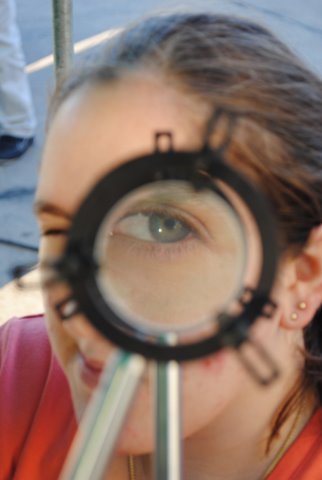 |
Katy Accetta Youngstown St. Univ. |
Andrea Kunder (CTIO) | RR Lyrae as Structural Tracers for the LMC |
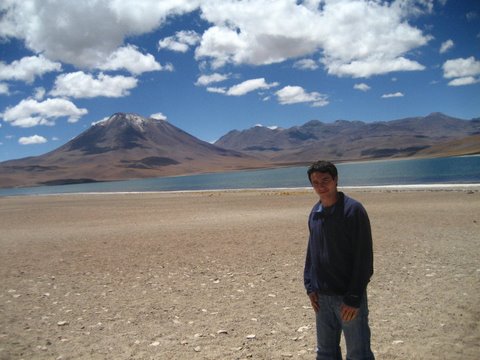 |
Mason Carney University of Maine |
Ryan Campbell (CTIO) | Phase-Resolved Cyclotron Polarimetry of HU Aqr |
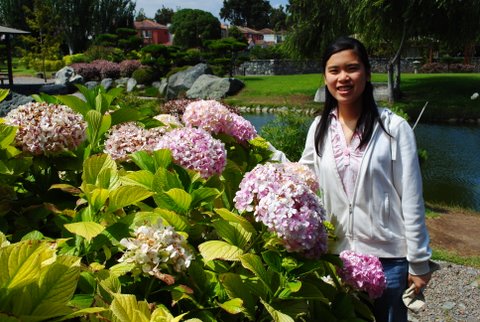 |
Li-Wei Hung The Ohio State Univ. |
Roberto de Propris (CTIO) | Alignment of Giant and Dwarf Galaxies in Abell 1689, MS1358+62, and CL0024+16 |
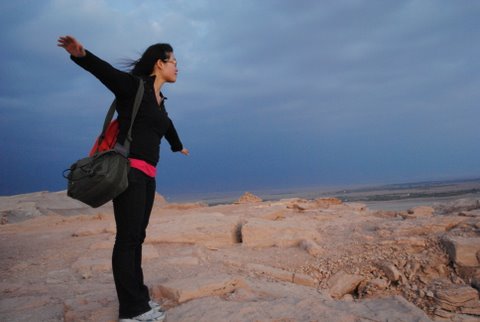 |
Melodie Kao MIT |
Craig Harrison (CTIO) | Measuring the Mass of A370 |
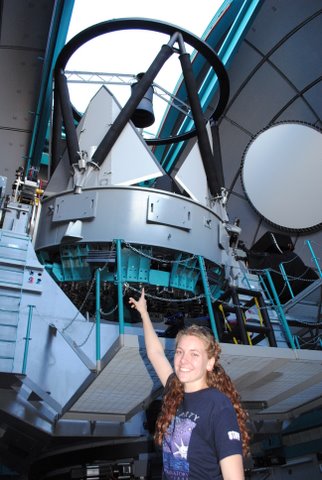 |
AJ Salois University of Arkansas |
Malcolm Smith (CTIO) | Sampling Studies of Quasars, Radio Loud/Quiet Galaxies: The Cause of Radio Emission |
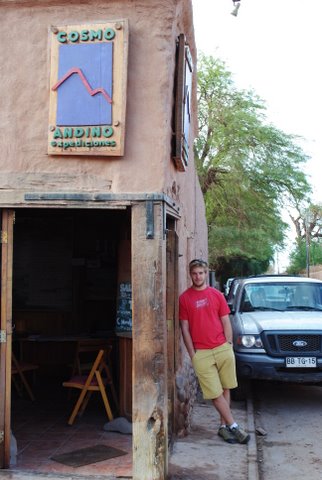 |
Conor Sayres University of Washington |
John Subsavage(CTIO) | Searching for Unknown Southern WDs in 2MASS and SDSS |
| Student & Institution | Mentor(s) | Project Title | |
 |
Eduardo Banados Pontificia Universidad Catolica de Chile |
Roberto de propris (CTIO) | The Dwarf Galaxies in A1689, MS1358, and CL0017 |
 |
Yasna Ordones Universidad de La Serena |
Peter Pesev (Gemini) | The Status of the Resolved Stellar Populations in the Milky Way Globular Clusters using 2MASS |
| Student & Institution | Mentor(s) | Project Title | |
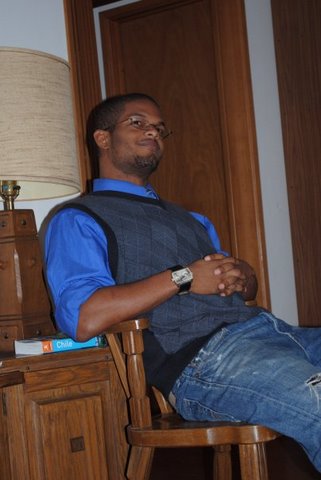 |
Mark Bryant Southern University and A & M College |
Sean Points (CTIO/SOAR) | Multi-band Calibration of the MCELS Survey |
| Student & Institution | Mentor(s) | Project Title | |
 |
Ana Mikler Union College |
Andrea Kunder and Alistair Walker (CTIO) | The giant branch in Milky Way Globular Clusters |
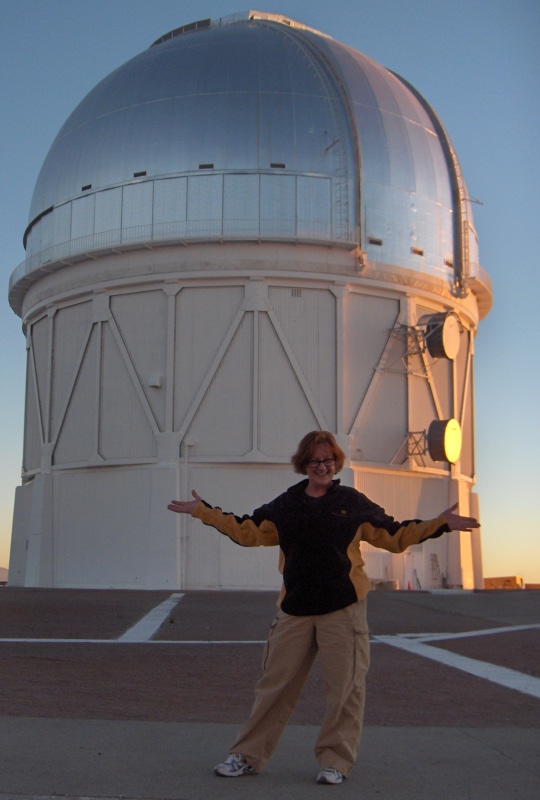 |
Julia O'Connell Tennessee State |
Roberto De Propris and Nicole van der Bliek (CTIO) | Helium Enhancement on the Horizontal Branch of NGC1851 |
 |
Derrick Rohl Illinois Wesleyan University |
Percy Gomez (Gemini) | IR Imaging and Spectral Reduction of Abell 1882 Supergroup |
 |
Brett Basarab Middlebury |
Bryan Miller and Gelys Trancho (Gemini) | Lick-Index Calibration of the Gemini Multi-Object Spectrographs |
| Student & Institution | Mentor(s) | Project Title | |
 |
Gustavo Morales Pontificia Universidad Catolica de Chile |
Roberto De Propris (CTIO) | NUV luminosity functions of galaxies in clusters |
 |
Cesar Munoz Universidad de Concepcion |
Peter Pesev (Gemini) | Integrated-light magnitudes of the Galactic Globular clusters using Galex data |
| Student & Institution | Mentor(s) | Project Title | ||
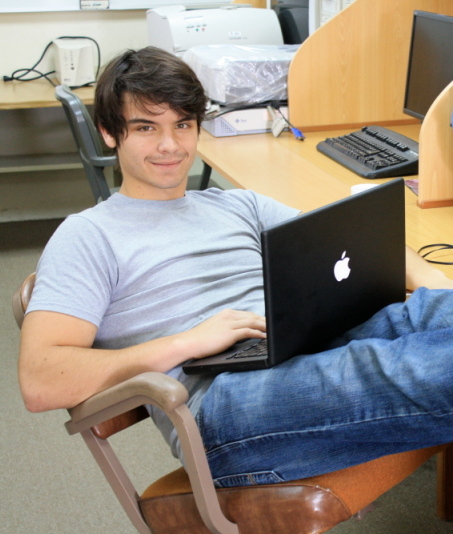 |
Owen Boberg New Mexico State |
David James (CTIO) | Title | boberg37(at)gmail.com [76] |
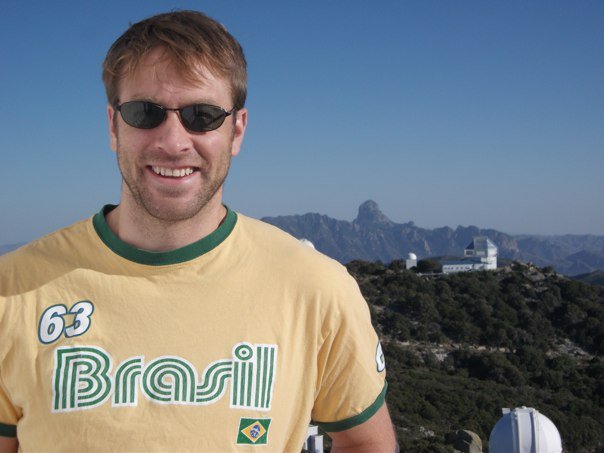 |
Ryan Keenan University of Wisconsin |
Roberto De Propris (CTIO) | K-Selected Dynamically Close Pairs of Galaxies | rykeenan(AT)gmail.com [77] |
| Student & Institution | Mentor(s) | Project Title | ||
 |
Scott Stubbs UCSB |
Andrea Kunder (CTIO) | Absolute Photometry of RR Lyrae in the Galactic Bulge | sastubbs(AT)gmail.com [78] |
Integrated Photometry of Globular Clusters in the LMC and M33 - Jomel Atienza-Rosel
Identifying SNRs in the Magellanic Cloud Emission-line Survey - Amanda Jefferson
The Multicolor Light Curve of SN 1997ej - Aaron Steffen
Developing an All-Sky Monitor Camera System - Patrick Welti
This project focused on the integrated properties of the globular cluster systems in the bar of the Large Magellanic Cloud and in M33. The objective is to study the age-metallicity relation of the clusters in these galaxies, and investigate factors which may affect this relation. For this purpose the basic properties of the clusters, such as the mass and density distribution, are first determined to find similar clusters from both of the galaxies. We used a King-model fitting program to determine the parameters of several clusters in both the LMC and M33. These clusters will then be the focus of more detailed comparative studies to investigate the age-metallicity relation.
The Magellanic Cloud Emission-line Survey (MCELS) is a survey of two of our nearest neighboring galaxies, found in the Local Group: the Large and Small Magellanic Clouds. Dr. Smith and his collaborators wish to study the properties, kinematics, and dynamics of the interstellar medium in these galaxies using [SII], [OIII], and H-alpha filters.
Working in this survey, my project included observations, data reduction, data analysis, and final image production. I contributed about 6 nights of observing on Cerro Tololo, reduced about 7 nights of data, and finally analyzed two particular regions of the LMC in which we anticipated finding supernova remnant candidates. Procedures to complete this final analysis task involved taking the ratios of [S II] to H-alpha images and looking for regions of relatively strong [S II] emission, which indicate shocked gases, and therefore can aid in identifying an evolved supernova remnants. Several supernova remnants, including one previously undiscovered remnant, were identified in this way in the two regions which were fully analyzed.
I performed UBVRI photometry on the Supernova (SN) 1997ej which was observed at the Cerro Tololo Inter-American Observatory (CTIO). SN 1997ej was located in the elliptical galaxy IC2060. The galaxy light profile was modeled and subsequently subtracted using a task in the Space Telescope Science Data Analysis System (STSDAS), which is a package in the IRAF reduction program. PSF photometry was then performed on the galaxy-subtracted images using DAOPHOT, a program created by Peter B. Stetson of the Dominion Astrophysical Observatory. Landolt standards taken on 9 photometric nights were used to calibrate local standard stars in the images. Photometry on 11 nights of non-photometric data was then performed using these local standards.
Results of this 10-week REU program project were discussed in two poster papers. One was presented at the University of Wisconsin - Eau Claire's Undergraduate Research Day. The other poster was presented at the June 1998 meeting of the American Astronomical Society --- (Steffan et al. 1998, BAAS, 192, #06.09). A paper will be written and submitted to an astronomical journal in the following months.
We put together a sky camera which, when used on moonless nights, will be helpful in detecting the presence of thin clouds and/or high cirrus. The camera consists of three parts: an image intensifier, a video camera, and a protection circuit. The protection circuit prevents the phosphor screen in the image intensifier from being damaged by excessive light. The video signal is converted into a digital image using a frame grabber card in a Windows PC. The camera images are fed into a pipeline system which takes many images, averages them, and then writes them out into a format ready to be included into a self-updating web page. When the system is completely finished, astronomers will be able to bring up this web page and have a automatically updated image of the sky outside.
A Comprehensive Look at LH72 in the Context of Constellation III - Jeremy Buss
LMC X-2: The Search for the Orbital Period - Jenny Greene
The Orbital Period of the Double-lined Cataclysmic Variable Phe 1 - Jessica Kim-Quijano
The Evolution of SN1987A Debris: 12 Year Light Curves in UBVRIJHK - Alicia Soderberg
Supernovae Type Ia and Their Host Galaxies - Ricardo Demarco
We present results obtained from a multi-faceted study of the LMC OB association LH 72. LH 72 lies near the geometrical center of Constellation III, a kpc-sized complex of stars and gas comprising one of the largest known superbubbles. Our study combines ultraviolet and optical spectra of the brightest blue stars, UBV photometry of the entire association, narrow-band H-alpha and H-beta images of the surrounding H II region, and will include analysis of available data of the H I gas. These data provide the necessary ingredients for characterizing the star formation history and initial mass function of the association; for mapping the distribution of dust and measuring the ultraviolet reddening law; and for exploring the interaction of the stars with the interstellar medium.
To date, we have analyzed optical spectra of 13 stars in the association in addition to IUE spectra of 7 of the same stars. We have assigned spectral and luminosity classes to the stars on the basis of the optical spectra, from which we generate an H-R diagram of the bright stars of LH 72. By fitting isochrones to the H-R diagram, we find stellar ages ranging from ~2-18 Myr. LH 72 thus contains stars as young and as old as any found in Constellation III. The observed age range spans the proposed expansion age of the surrounding superbubble, suggesting that star formation may proceed long after an initial triggering event. We also find continued evidence for propagating star formation on the scale of the association, as the center of star formation activity has drifted by ~100 pc over the past 10-15 Myr.
LMC X-2 is the most X-ray luminous low mass X-ray binary (LMXB) known, as well as one of the five brightest X-ray sources in the LMC. It has been tentatively classified as a Z source based on its high luminosity and X-ray flaring activity. Its location in the LMC provides a known distance and low line of sight absorption, neither of which are easy to determine for Galactic LMXBs. In addition, the low metallicity of the LMC offers the opportunity to compare the physical properties of LMXBs in different environments. However, despite extensive observation, no orbital period has yet been established for this system. Orbital period searches have produced contradictory results, with evidence for photometric and/or spectroscopic periods of 6.4 hrs (Bonnet-Bidaud et al. 1989), 8.15 hrs (Callanan et al. 1990) and 12.5 days (Crampton et al. 1990).
We present synoptic V band photometry of LMC X-2 obtained with the YALO 1-m telescope at CTIO. LMC X-2 was observed for 1 hr each night for 45 nights from 9 Nov 1998 to 8 Jan 1999. We find LMC X-2 to be variable over a range of V=17.9-18.9. Our observed light curve is very complex, exhibiting modulations of up to 0.5 mag in the brightness level from night to night in addition to ~0.1 mag variability during the nightly observations. Using the CLEAN and PDM algorithms we find the strongest periodic signal at 8.18 hrs. If LMC X-2 is indeed a Z source with an ~8 hr period, this would challenge current evolutionary scenarios in which Z sources contain an evolved mass donor and thus a long orbital period. Due to the random variability component apparent in our lightcurve, additional photometry is unlikely to yield a more accurate determination of the orbital period. Therefore, radial velocity observations of LMC X-2 are urgently needed to confirm a probable 8 hr orbital period.
We present an orbital period for the double-lined cataclysmic variable (CV) Phe 1, derived from time-resolved CCD photometry using the 0.9-m telescope at the Cerro Tololo Inter-American Observatory. The CV nature of Phe 1 was first confirmed spectroscopically in 1997; in addition to emission lines of H I and He I, TiO bands characteristic of the late type secondary star were observed. A period of 0.27 d has been determined with the Phase Dispersion Minimization algorithm from the differential V and I light curves taken over 6 consecutive nights in 1998. The light curves show a full range of variation of approximately 0.7 and 0.4 mag in V and I, respectively. When the data are folded on this period, two orbital minima of different depths are observed. Three mechanisms may contribute to the variability observed in Phe 1: primary and secondary eclipses, ellipsoidal variation of the distorted secondary star, and/or viewing of its irradiation-heated inner face. A radial velocity study to determine the component masses is currently underway.
HST observations show that the nitrogen-rich circumstellar material surrounding SN1987A is a significant source of contamination in ground-based photometry for the SN debris. We analyze six epochs of WFPC2 PC images (1994.8--1999.0) in broad-band filters F336W, F439W, F555W, F675W, and F814W (HST UBVRI) and four epochs in narrow-band filters F656N, F658N, and F502N. Our corrected light curves demonstrate that flux from the circumstellar ring dominates flux from the debris in the ground-based data set after day 1195 (JD = 2448047). On day 3268, the magnitudes for the SN debris were U,B,V,R,I = 19.75, 19.85, 19.97, 18.91, 19.30. The magnitudes for the ring (including the faint star superimposed on the ring) were U,B,V,R,I = 18.29, 19.21, 18.36, 16.44, 18.41.
We have fit the slow change in the ring magnitudes over the last five years to provide an extrapolation back to the epochs of ground-based observations. These extrapolations are used to remove the ring flux from the ground-based photometric measurements, which yields a uniform set of UBVRIJHK light curves for the debris of SN1987A over its past 12 year evolution.
The study of the absolute luminosities of 29 supernovae (SNe) type Ia in the Calan/Tololo survey confirms a relation between the peak luminosity of the SNe and the decline rate as measured by the light curve. Moreover, there is a relation between the luminosities of the SNe and their environment: late-type galaxies contain the brightest SNe and their light curves show a slow-decline rate, whereas elliptical galaxies have not produced slow-decline SNe. Our project has as a goal to verify the relation between the peak of the light curve and the morphological type of the host galaxy by updating the morphological type of the host galaxy for 4 SNe of the Calan/Tololo survey and considering as well 8 high-z SNe. However, the focus of the project was not the SNe themselves, but rather their host galaxies. The data set consisted of 12 SNe type Ia (SN1992ae, SN1992au, SN1992bi, SN1992bp, SN1992br, SN1995K, SN1995ao, SN1995ap, SN1996F SN1996G, SN1996H, SN1996U), four of which (SN1992ae, SN1992au, SN1992bp, SN1992br) were from the Calan/Tololo survey and the rest from the high-z search. All the images used for this project were taken with the WFPC2 of the HST with the filters F450W (for Calan/Tololo) and F702W (for high-z). The redshift ranges from 0.01 < z < 0.62 within the sample.
First of all, the calibration files for each image were updated. Then, the position of the host galaxy in the HST image was found for each SNe. Because of the resolution of the HST images, it was possible to update the morphological type of the host galaxy for the 4 SNe in the Calan/Tololo survey. Moreover, it was possible to determine roughly the morphological type of the host galaxy for the high-z SNe. In some cases, however, this work was quite difficult, and in others impossible, because of the low surface brightness of the galaxies. Finally, the galaxy types and the delta-mag(15) vs. galaxy type plot were updated. The results obtained from these updated galaxy types are in agreement with the relation between the peak luminosity of SNe Ia and the host galaxy type. We also obtained the position of the SN with respect to the center of its host galaxy and a reference star. Finally, we performed aperture photometry on each galaxy, to determine the instrumental magnitudes. Because of the low surface brightness of some of the galaxies, picking the correct aperture was difficult. Furthermore, in some cases the photometry was complicated by the presence of a bright nearby object, such as a star or galaxy. In the future we plan to determine the physical distance to each galaxy, assuming a universe with a positive cosmological constant. In addition, we will make a better estimate of the errors in the distance measurements and determine the standard magnitudes for the host galaxies.
A Search for Dwarf Novae in Globular Cluster 47 Tucanae - Melanie Blackburn
Identifying the Globular Cluster Systems of the Sculptor Group - John Bright
A Search for the Orbital Period of LMXB X0614+091 Ben Johnson
Optical Counterparts of X-ray Sources in the Small Magellanic Cloud - Tanya Tavenner
Peculiar Motions with a Set of SN Ia distances - Axel Bonacic
Testing completeness of and refining the NGSS residual search methods - Juan Seguel
Until recently, no dwarf novae have been known to exist in globular clusters. Because of the density of stars that form these clusters, one may expect many such binary systems. Dwarf novae are easy to detect because of their relatively short recurrence times, ranging from 20 to 300 days, as compared with the 10,000 (or more) year recurrence times of classical novae. Dwarf novae also have amplitude outbursts of 2-6 in magnitude, making them easily visible. 47 Tucanae has been chosen for observation, as it appears in the right location at the right time of year, and has characteristics of an average globular cluster with moderately poor metallicity. This helps minimize any difference in metallicity of the dwarf novae, while still allowing for study of these differences.
Data obtained over a period of five months from the 1m YALO telescope at Cerro Tololo Inter-American Observatory has been reduced and subtracted. To date, several variable stars have been found through visual means, but no dwarf novae. Further analysis of this data, as well as new data, may provide a more optimistic outcome. If found, study of these dwarf novae will provide a look at the stellar dynamics of globular clusters. For now, we can conclude that dwarf novae are indeed rare in globular clusters.
We present results from a study to identify the globular cluster systems of six of the brightest galaxies of the Sculptor Group: NGC 45, NGC 55, NGC 247, NGC 253, NGC 300, and NGC 7793. Our observations were made with the CTIO 4-m telescope, Mosaic II camera, and CMR filter set. The 30 arcmin field of Mosaic II captures the entire expected extent of the globular cluster systems of these galaxies in a single pointing of the telescope. We identify the cluster candidates through their morphology and C-R and M-R colors. Selecting objects by isophotal area, isophotal flux, ellipticity, C-R and M-R, we find 100-150 objects per galaxy with properties similar to known globular clusters in NGC 253. We estimate that half of these objects are true clusters, while the other half are contaminating background galaxies. With spectroscopic follow-up, these cluster candidates will provide important clues to understanding the formation of globular clusters in small galaxies like the LMC and M33.
Did halos form before disks in late-type galaxies?
Some evidence FOR:
* Milky Way's halo globular clusters are among oldest objects in the Universe, with ages 12-15 Gyr
* Milky Way disk appears to be ~10 Gyr old
Some evidence AGAINST:
* Halo formation is a continuing process. Example: infall of Sagittarius dwarf into Milky Way (Ibata et al. 1994), which is contributing ~4 globular clusters to the halo (Da Costa & Armandroff 1995)
* The LMC's oldest globular clusters are as old as the Milky Way's oldest clusters (Mighell et al. 1996, Olsen et al. 1998, Johnson et al. 1999), yet they have disk kinematics (Schommer et al. 1992)
* M33's clusters have halo kinematics (Schommer et al. 1991), but many have exclusively red horizontal branches, suggesting intermediate age (Sarajedini et al. 1998)
What is the dominant formation site of globular clusters in late-type galaxies?
The identification of clusters in late-type galaxies is difficult because the number of clusters is small compared to the number of contaminating foreground stars and background galaxies. We circumvent this problem by:
* Observing galaxies which are nearby enough to partially resolve the clusters yet far enough away to capture the bulk of a cluster system in a single image with a large-format CCD camera
* Using the automated program SExtractor (Bertin & Arnouts 1996) to create a database from which we select likely candidate clusters
Our observations were taken with the CTIO 4-m telescope and Mosaic II camera on the nights of Nov 11-13, 1999, two of which were photometric. We used three filters, Kron-Cousins R and Washington C and M, which combined give improved age-metallicity discrimination over BVR. Exposure times were chosen to achieve S/N of 100 in R for clusters as faint as Mv = -6. The Mosaic II camera delivers excellent image quality over a 30'x30' field of view; combined with good seeing ( 1 arcsec), Mosaic II lets us discriminate candidate clusters from stars and background galaxies over a 20x20 square-kpc area at a distance of 2 Mpc, typical of the nearest Sculptor Group galaxies.
The processed and stacked images were analyzed with SExtractor:
* Detection and measurement limits were set by the limiting surface brightness, 3-sigma above the summed noise
* Likely cluster candidates selected by isophotal area, isophotal flux, ellipticity, C-R and M-R colors
Beasley & Sharples (2000) have spectroscopically identified 14 globular clusters in NGC 253. These known clusters were used to test and tune our selection criteria, described in Fig. 1.
Beasley, M. A., Sharples, R. M. 2000, MNRAS, 311, 673
Bertin, E., Arnouts, S. 1996, A&A, 117, 393
Da Costa, G. S., Armandroff, T. E. 1995, AJ, 109, 2533
Ibata, R. A., Gilmore, G., Irwin, M. J. 1994, Nature, 370, 194
Johnson, J. A., Bolte, M., Stetson, P. B., Hesser, J. E., Somerville, R. S. 1999, ApJ, 527, 199
Mighell, K. J., Rich, R. M., Shara, M., Fall, S. M., 1996, AJ, 111, 2314
Olsen, K. A., Hodge, P. W., Mateo, M., Olszewski, E. W., Schommer, R. A., Suntzeff, N. B., Walker, A. R. 1998, MNRAS, 300, 665
Sarajedini, A., Geisler, D., Harding, P., Schommer, R. 1998, ApJ, 508, 37
Schommer, R. A., Christian, C. A., Caldwell, N., Bothum, G. D., Huchra, J. 1991, AJ, 101, 873
Schommer, R. A., Suntzeff, N. B., Olszewski, E. W., Harris, H. C. 1992, AJ, 103, 447
Figures:
Figure 1: The area within the isophote having surface brightness 3-sigma above the background (per square-arcsec) is plotted vs. the flux within the isophote, for objects measured in a stacked R image of NGC 253 (1 arcsec seeing) using the program SExtractor. Only those objects with e < 0.4, 0.25 < M-R < 0.8, and 0 < C-R < 2.4 are shown. Objects with spectra from Beasley & Sharples (2000) are marked with filled circles for globular clusters, diamonds for background galaxies, and asterisks for stars. A number of the Beasley & Sharples objects fall outside our selection criteria or were masked as lying too close to the galaxy disk, and so are not plotted here. The line shows the locus defined by a scaled PSF measured from a single bright star. The majority of the globular clusters lie above this line but below the sequence defined by the galaxies. The box encloses 100 objects of unknown nature, 50% of which we expect are globular clusters in NGC 253, as estimated from the number of clusters and galaxies within the box. JPG (34 kb) [153] or Postscript (59 kb) [154]
Figure 2: Color-color diagram of globular clusters (filled circles), background galaxies (diamonds), stars (asterisks), and candidate clusters picked from the box of Fig. 1 (small open circles) in NGC 253. A typical error bar, representing both random photometric error and uncertainty in the calibration, is shown in the lower left-hand corner. The lines represent three composite stellar populations simulated from the models of Schaerer et al. (1993), with ages of 1 Gyr (solid line), 4 Gyr (dotted line), and 12 Gyr (dashed line). The lengths of the lines correspond to the range of metallicities -1.7 < [Fe/H] < 0.0. Although the combination of photometric error and age-metallicity degeneracy prevents us from deriving precise ages and abundances, the bulk of the identified globular clusters appear to be of old or intermediate age, as already noted by Beasley & Sharples (2000). The bluest appears young, perhaps analogous to the blue globular clusters of the Magellanic Clouds. Our candidate clusters, if confirmed through spectra, appear to contain a balanced distribution of young and older clusters. JPG (20 kb) [155] or Postscript (52 kb) [156]
Figure 3: The area within the isophote having surface brightness 3 above the background (per arcsec2) is plotted vs. the flux within the isophote, for objects measured in a stacked R image of NGC 45, NGC 55, NGC 247, NGC 300, and NGC 7793 using the program SExtractor. Only those objects with e<0.4 are shown. The box edges are as defined in Fig. 2, after scaling for differences in distance and exposure time. Each box encloses 100-150 candidate clusters. JPG (108 kb) [157] or Postscript (742 kb) [158]
Figure 4: A GLOBULAR CLUSTER IN NGC 253: This closeup of a globular cluster spectroscopically identified by Beasley & Sharples (2000) shows the object to be round yet noticeably broad compared to the profile of a nearby star. Our analysis of this image has turned up 100 objects with properties similar to previously identified globular clusters. JPG (74 kb) [159] or Gzipped Postscript (884 kb) [160]
We present extensive new photometry of the low mass X-ray binary (LMXB) X0614+091. Discovered in 1974, its X-ray properties have identified it as a member of the so-called Atoll sources. Atoll sources are thought to have main sequence mass donors and relatively short (< 8 hours) orbital periods. Early observations of the faint (V=18.5) optical counterpart revealed an unusual spectrum that only showed the NIII/CIII 4640/50 emission complex. LMXB spectra usually always also exhibit HeII 4686 emission. Previous variability searches detected a 5.2 day modulation in X-rays (Marshall & Millit 1981) and a ~10 day periodicity in the optical (Machin et al. 1990). If either one of these modulations reflects the orbital period, mass transfer via Roche lobe overflow would require a giant secondary, inconsistent with the observed optical properties of the source. An alternative cause for the variations is precession of the accretion disk in the system, though it is not clear how these two periods can be reconciled.
We obtained V band observations of X0614 with the queue scheduled YALO telescope at CTIO between UT 1999 Dec 10 and 2000 Jan 31 in order to confirm the reported ~10 day variability and search for an orbital period. Comparison with Rossi X-ray Timing Explorer (RXTE) All Sky Monitor (ASM) data reveals that some of the optical observations occurred during a rare state of decreased X-ray variability of the source. Comparison of optical observations from the periods of high and low X-ray variability shows several differences. First, optical variability increases during the period of high X-ray variability, with an increase in the amplitude of variability from 0.1 mag to 0.25 mag. In addition, this increased optical variability seems to be over longer time scales than during the X-ray constant period. Second, the average optical magnitude decreases during the period of high X-ray variability, while the average X-ray magnitude increases.
We used the CLEAN algorithm to remove the sampling window and search for periodicities. No convincing periodicities were found in the complete optical lightcurve. Due to the differences in optical variability during the high and low X-ray variability states the data was split into two sets for further analysis. For the low X-ray variability state a peak in the power spectrum occured at 1.06 days. For the high X-ray variability state the highest peak in the power spectrum occurs at 1.11 days. Figure 4 shows a strong periodicity at this peak. No evidence of a 5.2 day periodicity was found. While the complete data set does not show a 9.8 day periodicity, the optical lightcurve of just the high X-ray variability state folded on 9.8 days reveals a possible periodicity. No comparable (~10 day) periodicity was detected in the low X-ray variability state.
Figures:
Figure 1: Optical (red circles) and X-ray (blue circles) lightcurve of X0614+091 showing anticorrelation of optical and X-ray brightness. A comparison star (black circles) is also plotted. JPEG (40 kb) [161] or Postscript (59 kb) [162]
Figure 2: Optical (open circles) and X-ray (solid circles) lightcurve of X0614+091 showing rare state of decreased X-ray variability. JPEG (45 kb) [163] or Postscript (57 kb) [164]
Figure 3: Optical light curve of X0614+091 during decreased X-ray variability state, folded on a period of 1.06 days. JPEG (23 kb) [165] or Postscript (26 kb) [166]
Figure 4: Optical light curve of X0614+091 during increased X-ray variability state, folded on a period of 1.11 days. JPEG (23 kb) [167] or Postscript (28 kb) [168]
Figure 5: Optical light curve of X0614+091 during increased X-ray variability state, folded on a period of 9.8 days. JPEG (22 kb) [169] or Postscript (28 kb) [170]
RXTE ASM data provided by the ASM/RXTE teams at MIT and at the RXTE SOF and GOF at NASA's GSFC
We searched for optical counterparts to X-ray sources in the SMC. We looked at thirteen fields observed with the CTIO 1.5-m telescope for potential canidates. These fields were selected from a ROSAT survey of the SMC that found about 250 X-ray sources. These thirteen fields were chosen because of their weak, hard X-ray emissions, which might correspond to cataclysmic variables. These fields also had the smallest pointing errors from the X-ray satellite. Each field was observed in the optical UBVRI passbands.
A region approximately twice as large as the pointing error given by the satellite was studied in each field. Standard magnitudes were obtained for every star in this region, from the standard stars which were viewed each night of the run. These standard magnitudes were then used in a ``poor man's spectrum'' by graphing them against their central wavelength. Cataclysmic variables should appear brightest in the blue, but also have substantial red flux. All of the stars that are strongest in the blue are considered to be candidates for the X-ray source. In the future, these candidate stars will be re-observed in order to determine which one is producing the X-rays in each field.
Figures:
Figure 1: A representative field we observed. The green circle represents the pointing error of the ROSAT satellite. (The linear feature is an unfortunately-located satellite trail.) JPG (63 kb) [171] or Gzipped Postscript (510 kb) [172]
Figure 2: X-ray sources are well-known for being located just outside the pointing error box, so this image shows the stars we actually analyzed. JPG (59 kb) [173].
Figure 3: In order to form a ``poor man's spectrum,'' the wavelengths of the filters are graphed against the calibrated magnitudes for each star. This is the poor man's spectrum of four example stars. The orange star stays fairly constant over the spectrum. The red star is brightest in the red wavelengths. The purple star is high in the blue, however it is even higher in the red. The blue star is fairly constant across the spectrum, then goes up sharply in the blue wavelengths. This is the best candidate in this example. JPG (31 kb) [174].
Figure 4: The locations of the four stars in the field. JPG (64 kb) [175].
We have studied the cosmological motion of a sample of 40 supernovae (SNe) type Ia, whose distances have been carefully determined, and corrected for reddening. The redshifts of the sample range from 3000-30,000 km/sec. Our best estimates show that the bulk of the SN Ia are at rest in the frame defined by the cosmic background radiation; i.e., the reflex motion of the Milky Way in the SN frame reproduces the CMB dipole with significant accuracy. The bulk flows in this frame are typically 200+/-200 km/sec. Most of the signal comes from the sample between 3000 and 15,000 km/sec. At higher redshifts the precision of the SN Ia distances (typically 10%) are insufficient to detect typical peculiar motions (our signal becomes dominated by noise). The "convergence depth" and scale of these motions appears to be about 10,000 km/sec. These results are at variance with the large bulk motions measured by Lauer and Postman (1994) and Hudson et al (1999). Our motions and scale appear to be consistent with cosmological simulations of CDM, which predict the gravitational accelerations of typical observers given the expected distribution of matter in the universe, when scaled by the abundance of rich clusters.
Figure 1: Redhisft bin vs.\ mean velocity in the bin for the data set. JPG (21 kb) [176] or Postscript (15 kb) [177]
Figure 2: Direction of the dipole determined from the SNe velocities. Asterisk = 0.001 < z < 0.09 shell; square = 0.01 < z < 0.05 shell; triangle = 0.05 < z < 0.09 shell; diamond = 0.035 < z < 0.09 shell. The crosses are, from ``north'' to ``south,'' the direction of dipoles of: (1) Riess result, (2) Schommer result, (3) CMB result, (4) Lauer and Postman result. JPG (43 kb) [178] or Postscript (24 kb) [179]
While observations of distant supernovae (SNe) are providing intriguing new information about cosmological parameters, there is still much work to be done on understanding the details of the various types of SNe and the possible systematic uncertainties in their use as precise distance indicators. Such work is best done with studies of relatively nearby SNe (z<0.1) which are bright enough to obtain detailed photometric and spectroscopic follow-up data for.
NGSS (Nearby Galaxies Supernovae Search) is a search for moderate to low redshift SNe using the mosaic camera at the Kitt Peak 0.9-m telescope, in Tucson, AZ. This 8K x 8K mosaic CCD array provides an areal coverage of ~ 1ºx1º and allows us to search for SNe along the celestial equator to a limiting magnitude of R ~ 21.
Due to the limitations in the search methods the NGSS team uses, it is important to investigate how effective we are in finding SNe candidates in residual images. In doing so, we will be able to determine accurate SNe rates from our search sample, and incompleteness in our searches due to our methods.
We added false stars into the images, used Daophot routines to obtain photometry for false stars, and ran NGSS software to combine and substract images. Finally, we used IRAF scripts to search for "false supernovae" to measure detection efficiency and improve detection algorithms. The preliminary results indicate that generating a good PSF is very important. Factors such as stars near the chip edges, bad pixels, or bad seeing must be carefully considered.
Figure 1: Example of false SNe added into an image field. JPG (191 kb) [180] or Postscript (2354 kb) [181]
Figure 2: Sample PSF of field stars. JPG (30 kb) [182] or Postscript (167 kb) [183]
I would like to thank Don Hoard, Lou Strolger and Chris Smith for giving me the opportunity to work in the PIA program and NGSS project. This research was carried out as part of the 2000 Research Experiences for Undergraduates Program at CTIO, funded by the National Science Foundation (NSF).
The Search for the Orbital Period of LMXB 4U1556-605 - Gabriel Brammer
Star Formation in the Isolated Molecular Cloud NGC 1788 - Kathy Cooksey
HII Region Analysis in Dwarf Irregular Galaxies: The Slog and HIIphot - Shadrian Holmes
Kinematics of the Bipolar Planetary Nebula Sa 2-237 - Rodolfo Montez
Optical Light Curve of SN2000cx - Jorge Cuadra
We present photometry results of the search for the orbital period of the low mass X-Ray binary (LMXB) system 4U 1556-60. The orbital period is the first parameter needed before the other geometric parameters and physical properties of a binary system can be determined. The optical counterpart for the X-ray source of 1556-60 was identified by Charles et al. (1979), and subsequent observations failed to detect significant periodicity in optical variations. Smale (1991) proposed a possible period of 9.1hrs (0.3807 days) but added that a further independent study would be needed for confirmation.
The data obtained for this project were obtained on three separate runs, the first with the CTIO 1.5 meter telescope from April 29 to May 5, 1997, and the second and third with the CTIO 0.9 meter telescope from May 22 to 29, 2000 and from June 17 to 23, 2000. We have 170 400s V filter exposures from the 1997 run, and we have 174 450-900s V and 122 600-900s I exposures from the combined runs from 2000. We observed the source to vary between 0.2 and 0.6 magnitudes nightly as well as a larger time scale brightening visible in the 2000 light curve (Figure 2). The time coverage and size of our data sets are both improvements over previous published observations, and should be capable of revealing the orbital period if photometrically possible. Another goal of this project was to correlate simultaneous X-ray observations taken with the RXTE satellite over two days of the 1997 run, but there was not sufficient temporal overlap in the optical and X-ray data sets to perform the correlation.
We used the CLEAN program to search for periods in the data separated into two sets from the two epochs. We normalized the data from 2000 to the mean value to remove contributions from the overall brightening observed which we believe to be unrelated to the orbital period. The CLEAN program performs a fourier analysis of the data and iteratively subtracts spectral contributions due to sampling, such as gaps in the data and the finite width of the data set itself, and unfortunately, our light curve hints that the orbital period could be close to 1 day, which is confounded by the earth's rotation.
Analysis of the two data sets with CLEAN did not provide a definitive result for the orbital period of 1556-60. We did find candidate periods of 0.46229 days and 0.43993 days for the 1997 and 2000 data, respectively, and the data folded on those periods are presented in Figures 3 and 4. Neither data set provided any evidence for the 0.3807 day period proposed by Smale (1991). There are many factors that could complicate the search for the orbital period of this system. First, the inclination angle of the system could be low, greatly decreasing the amplitude of optical variations. Second, there are is a large nightly scatter in the light curve that could be caused by X-ray flickering of the accretion disk and nonuniform heating of the normal star due to the disk. We conclude that further photometry will not be able to detect the orbital period of 4U1556-60, and that spectroscopic radial velocity measurements are needed for further investigation of the system.
Figure 1: Light Curve of LMXB 4U1556-60 from the 1997 observations. JPG (19 KB) [184] or PS (26 KB) [185]
Figure 2: Light Curve of LMXB 4U1556-60 from the 2000 observations. JPG (34 KB) [186] or PS (51 KB) [187]
Figure 3: Data from 1997 folded on the period candidate of 0.46229 days. JPG (37 KB) [188] or PS (106 KB) [189]
Figure 4: Data from 2000 folded on the period candidate of 0.43993 days. JPG (44 KB) [190] or PS (104 KB) [191]
In the standard model of star formation, UV radiation from OB stars or supernovae shockwaves compress the cold material in giant molecular clouds (GMCs). The denser areas or cores collapse due to self-gravity and accrete material until there is enough pressure to ignite nucleosynthesis, marking the beginning of the proto-star phase. This model successfully describes the formation of large conglomerations of stars. However, the spatial distribution of stars in the universe cannot be fully explained if stars only form in large clusters. Thus, effective star formation in isolated molecular clouds, further from the massive complexes but most likely still induced by them, offers an explanation to the distribution of stars in our universe. The region around NGC1788 is such an isolated cloud. We are performing a multi-wavelength survey of the area around NGC1788 in order to characterize how star formation proceeds in isolated molecular clouds.
NGC1788 is a reflection nebula about fifty parsecs to the west of the Orion (see Figure 1).1 LDN1616 is the dusty nebula encompassing NGC1788 and the surrounding area. Actually, LDN1616 merges with LDN1615 in a cometary shape (see Figure 2a & b). The exact distance to the nebula has many literature values ranging from 360 to 460 parsecs.2,3 The majority of the distance estimates are calculated by using the brightest star illuminating the cloud as a standard candle. In the case of NGC1788, that star is HD293815, a B9V star. The vast variation in distance estimates may be due to different calculations of the extinction, which stems from LDN1616/15. It is suspected that the star formation in NGC1788 has been induced most likely [by] the UV radiation from the past and/or present O stars in the Ori OB1 Association.3 This pressure may also be tearing the cloud apart (see Figure 3).2
We are cataloging what objects around NGC1788 appear in which wavelengths. We are nominally working with optical, infrared, and x-ray data but also with some radio data. We observe the region in optical [CTIO 0.9-m] and infrared [CTIO 1.5-m] ourselves and utilize collaboratorsA’ data [ROSAT X-ray sources and ESO 2.2-m optical] and web-based database [2-micron All-Sky Survey] for all wavelengths. We have taken optical spectra {CTIO 1.5-m] and have a collaborator's radio data. By comparing the objects in NGC1788 to regions of known star formation, we can see how effective and what stage the star formation is in NGC1788. For example, we can compare color-color and color-magnitude diagrams (CCD and CMD, respectively) for our region (see Figures 4 and Figures 5 a & b) to those of known star formation. The majority of our objects fall above the main sequence on the CMD, implying that they are young.
In general, we are examining NGC1788 at multiple wavelengths so that we can assess the state of star formation in the region. The standard model of star formation in GMCs does not sufficiently explain the spatial distribution of stars in our universe. We endeavor to characterize effective star formation in an isolated cloud so that we might find a process to compliment the standard model.
1 Ramesh, B. MNRAS 276:923-932. 1995 Apr. 27. p293
2 Racine, Rene. AJ 71:233-45. 1968 May. p233
3 Ogura, Katsuo and Sugitani, Koji. Publ. Astron. Soc. Japan 15:91-98. 1998 Aug. p91
NGC1788: UBVRI false color image (13.5'x13.5') ~ I made this from data my advisor Stefanie and I took at CTIOA’s 0.9-m telescope. We imaged NGC1788 in U, B, V, R, and I filters. Then I used LinuxA’s Gimp to color U, B, V, R and I images as purple, blue, green, red, and orange-red. I combined the short images with the long ones by having Gimp "multiply" the imagesA’ pixel values; this enabled the point source details of the short exposures to combine somewhat with the nebulosity of the long ones. I changed the contrast of each filter image in order to bring out the most detail of the center region and the nebula. I then overlaid V, R, B, U, and I (in that order) on each other and combined them with the "screen" function, which created a nice blend. JPG (59 kb) [192]
Figure 1: Molecular clouds of Orion complex (30° x 40°) ~ NGC1788/L1616 is cloud number 13 at about (5h 6m, -3d 30m). "Schematic diagram of the molecular clouds: the lowest contour from Fig. 2. Dots with numbers corresponding to those in Table 1, indicate locations of CO emission peaks. Some NGC numbers indicate the optical prominent objects coincident with CO peaks. The extent of UV emission from BanardA’s loop is indicated by the shaded arc (from OA’Dell, York, and Henize 1967; Isobe 1973). The dashed line roughly indicates the extent of the lamda Ori ring of clouds." (Maddalena, Ronald J., Morris, Mark, Moscowitz, J., and Thaddeus, P. The Large System of Molecular Clouds in Orion and Monoceros. ApJ 303:375-391. 1996 Apr. 1. p379) JPG (77 kb) [193]
Figure 2a: Cometary clouds around Orion complex (15° x 25°) ~ NGC1788/L1616 is cloud number 3 at about (5h 5m, -3d 30m). The image shows how most nebulae seem to be being blown away from Sigma Orionis. Ramesh believes Epsilon Orionis is the star inducing the star formation. "Surface distribution of objects in Table 1. Ticks indicate the directions of their tails." (Ogura, Katsuo and Sugitani, Koji. "Remnant Molecular Clouds in the Ori OB 1 Association." Publ. Astron. Soc. 15:91-98. 1998 Aug. p97) JPG (49 kb) [194]
Figure 2b: Cometary shape (DSS 1st Gen. 30'x30') ~ HD293815 is marked, as well as L1616 (the head) and L1615 (the tail). The image is a thirty by thirty arcminute Digital Sky Survey 1st generation image. JPG (114 kb) [195]
Figure 3: Proper Motion (DSS 2nd Gen 15'x15') ~ Tentative proper motion vector image of objects around NGC1788 region. A Digital Sky Survey (DSS) image (North up and East left) of 15'x15' around NGC1788 tentatively marked with the proper motion vectors of the Hipparcos and Tycho Catalogues objects (HIC and TYC, respectively). The HIC objects have five digit number corresponding to the catalogue number while the TYC objects are arbitrarily numbered. The TYC has larger errors than the HIC, and as of now, this is just a temporary, rough visual of the motions of the objects. HIP23837 is a ROSAT X-ray source but from the distance eximate (658pc), probably is not part of the cluster. (see Table 2) It is not known which are foreground, background and NGC1788 region objects. It could be that the cloud is disintegrating. JPG (75 kb) [196]
Figure 4a: Near-Infrared Color-Color Diagrams ~ This for objects from the 2-micron All-Sky Survey (2MASS) Point Source Catalogue (PSC) in the central region (see Figure 5c). The x-ray sources (pink points) come from one of our collaborators, and we matched them visually on a 2MASS image, as well as coordinate wise to the PSC. The green and blue lines are the main sequence and giants III lines, respectively. Reddening vectors to account for dust obscuration have not been calculated. 2MASS has a faintness limit of 14.3 for K, which was not taken into account in these diagrams. JPG (29 kb) [197]
Figure 4b: Color-Magnitude Diagram ~ This has the same properties as above (K is apparent magnitude). For the most part, the objects fall above the main sequence, as objects in a star-forming region should. The main sequence lines in this diagram were corrected for distance, which still needs to be verified. JPG (26 kb) [198]
Figure 4c: CMD of IC348 ~ This is another star forming region, with main sequence line and reddening vectors (solid and dashed lines, respectively). (Lada, Elizabeth A. and Lada, Charles J. Near-Infrared Images of IC 348 and the Luminosity Functions of Young Embedded Star Clusters. AJ 109:1682-1996. 1995 Apr. p1687) JPG (58 kb) [199]
Figure 5a: Optical Color-Color Diagrams ~ Color-color magnitude diagram. The optical data comes from one of our ESO collaborators. We calibrated their B, V, R, and I instrumental magnitudes with the transformation equations given and matched the objects in all filters. Once again, we took what we believe are the closest objects in ir.fits (see Figure 5.c). There are nine x-ray sources that have matches in the optical. The majority lie above the main sequence, as proto-stars or young stellar objects should. JPG (26 kb) [200]
Figure 5b: Color-Magnitude Diagram ~ The tail end of the main sequence ends about M6. The X-ray sources are once again entering the main sequence. However, since this is optical, extinction is much worse than in the near-infrared. We have not taken that into account for this diagram. JPG (25 kb) [201]
Figure 5c: Near-Infrared Image of Center ~ The objects in our CMD and CCD are taken from matching objects within the infrared image. The image is about 13A’ long and 8A’ wide. Only a few x-ray sources fall within this range, but they are all included in the diagrams. JPG (10 kb [202])
Figure 5d: Optical Image ~ This optical image is the same size, scale and location as the previous image. Comparing the two shows the extinction of the region. JPG (38 kb) [203]
Figure 6a: Optical Spectra Part 1 ~ This is low-resolution optical spectra from CTIO's 1.5-m taken by Stefanie. They are of the ROSAT x-ray sources in our region of interest (see Table 1). We are looking for Lithium absorption at 6708A, which is a characteristic of T-Tauri stars (young, low-mass stars). JPG (38 kb) [204]
Figure 6b: Optical Spectra Part 2 ~ More x-ray optical spectra... JPG (38 kb) [205]
Figure 6c: Optical Spectra Lithium ~ This is an enlargment of the 6700A area to better see the Lithium absorption. JPG (38 kb) [206]
Table 1: Multi-Wavelength Matches ~ View and/or download the table of correlated x-ray, near-infrared and optical objects. PDF (61.7kb) [207]
Table 2: Proper Motions ~ View and/or download the table of Hipparcos and Tycho Catalogue sources in the central region of NGC1788 (such data as distance and proper motion vectors). The objects are also cross-listed with the X-Ray sources. PDF (61.7kb) [207]
We have CTIO 4-m telescope + Mosaic wide-field CCD camera images taken in UBVRI and Halpha, [SII], and [OIII] of three Local Group dwarf Irregular galaxies: NGC 6822, WLM, and Phoenix, taken as part of the Survey project. As a step towards understanding the mode of star formation in these galaxies, we are employing an automated method to study the HII regions. A multi-step project, we are currently investigating the differences between HII region analysis done in a 1988 study of NGC6822 and the automated analysis, and developing a reference guide for Mosaic reductions. A complete sample of HII regions would be used to compare the properties of the HII regions (through luminosity functions and distribution of morphologies) with those in other Local Group galaxies.
We present H-alpha+[NII] images and long-slit, high resolution echelle spectra in the H-alpha and [OIII]500.7nm regions of Sa2-237, a possible planetary nebula. The image shows a bipolar nebula of about 34'' extent, with a narrow waist. The long slit spectra were taken over the long axis of the nebula, and show a distinct "eight'' shaped pattern and a maximum projected outflow velocity of 211 km/s, both typical of expanding bipolar planetary nebulae. By model fitting the shape and spectrum of the nebula simultaneously, we derive the inclination of the long axis to be 70° and the maximum space velocity of expansion to be 308 km/s. We use the IRAS fluxes, the radio flux, the energy distribution, and the projected size of Sa2-237 to estimate it's distance to be 2.1kpc. At this distance Sa2-237 has a luminosity of 340 Lsun, a size of 0.37pc, and assuming constant expansion velocity a nebular age of 624 years.
We have measured the light curve of SN2000cx (Fig.1), a Type Ia supernova (SN) located in the outer part of NGC 524 (an S0 galaxy), using observations made at CTIO telescopes (10 nights UBVRI at 36inch telescope and 20 nights BVRI at the YALO telescope). Using the standard analysis, we derive a substantial negative reddening in the host galaxy. Implication of this result is that relations between colors and decline rate for type Ia SNe are not universal.
From the 36 inch telescope observations we measured aperture photometry of the SN and Landolt standard fields. Seven of these nights were photometric and we used them to determine the transformation equations between instrumental and library magnitudes. With these equations we determined the magnitude of the SN every night and the brightness of others stars in the field, "local standards".
With the YALO observations we measured PSF photometry of the SN field and used the local standards magnitudes to find the brightness of the SN each night (Fig. 2). For a more detailed description, see the procedure described by Suntzeff et al.(1999, AJ 117:1175)in sections 2.2 and 2.3.
Then we added Kevin Krisciunas's data, observed and reduced independetly of ours. We see that the two data sets aproximately agree, but in some phases there are big differences (worst case ~0.2mag). However, in the bands and times that we used in the following analysis they are very close (Fig. 3).
We used Mark Phillips's programs to compute the reddening in the host galaxy (Phillips et al. 1999, AJ 118:1766), obtaining the surprising results:
The SN's (B-V) color at tail is bluer than we expected even for an unreddened SN. We are computing a physically impossible negative reddening: E(B-V)=-0.235+-0.051 (Fig. 4).
Using the "colors" defined by the differences between the maximum magnitudes of each curve we find with Bmax-Vmax a big reddening, E(B-V)=0.176+-0.104, but with Vmax-Imax we again find a negative one, E(B-V)=-0.128+-0.88 (Fig. 5). All results are corrected by Galactic reddening.
Also we used the Tonry et al. distance to the galaxy (2001, ApJ 546:681), scaled to H0=65 km s-1 Mpc-1, and the Galactic absorption to compute the absolutes magnitudes at maximum light of this SN. The results are B=-19.093, V=-19.201, I=-18.709 (uncertaints ~0.2mag). This SN is also fainter than we expected (Fig. 6).
This SN is in the outer part of an early type galaxy. We expected it to have little reddening, but Bmax-Vmax implies a big one.
Others methods show a physically impossible negative reddening.
Finally, the light curve of this SN looks normal but we found this object having intrinsic colors different that we expected. This tell us that the relations between colors and decline rate are not as universal as we thought.
Figure 1: Color image of the SN field, the SN is below and right of the brightest star. JPG (65 kb) [208]
Figure 2: CTIO light curve. GIF (5 kb) [209]
Figure 3: CTIO + Kevin's light curve. GIF (5 kb) [210]
Figure 4: (B-V) color at tail, the blue line is what we expect for an unreddened galaxy. GIF (7 kb) [211]
Figure 5: Bmax-Vmax and Vmax-Imax "colors" of SNe vs. dm15 (taken from Phillips et al. 1999), the blue circle is SN2000cx. GIF (10 kb) [212]
Figure 6: Maximum magnitudes vs. dm15 (taken from Phillips et al. 1999), the red circle is SN2000cx. GIF (68 kb) [213]
No abstract available. Sorry for the inconvenient
Optical Studies of the Vela Bullets - Jeffrey Carlin
From Binaries to Triples - Tucker Freismuth
The Disk Tilt of the LMC - Colette Salyk
K-correction Calculations for Type Ia Supernovae -Marcelo Mora
The Darkness of the Chilean Night Sky - Sergio Vera
Precision photometry for Type Ia supernovae - Miguel Verdugo
Infrared Spectra of SiO Masing AGB Stars in the Galactic Bulge - Amber Young
We examine evidence for gravitational lensing of quasi-stellar objects due to an overdensity of foreground galaxy clusters.
Studies of bright quasars have shown correlation between these background sources and foreground galaxies (Norman and Impey 2001 and references within). This suggests that these quasars appear intrinsically brighter as a result of their location behind large mass structures. Further studies (Fort et. Al., 1995) have demonstrated that there exists weak lensing of distant galaxies in the fields of some quasars. In order to investigate this weak lensing generally, more information about the mass structures themselves is needed.
We examine several quasar fields, in which quasars have redshifts of 0.7 < z < 2.5, in 4 SDSS filters (ugri) with the 1.5m telescope at CTIO. We will determine the photometric redshifts of galaxies in these fields in order to look for associated foreground clusters.
As photometric redshifts are much less time consuming to obtain than spectroscopic redshifts, they are a good alternate means for initial determination of the presence of structures and thus a good indicator as to whether or not more difficult to obtain spectroscopic data should be pursed.
We propose to take photometric follow-up observations of the brighter (V < 23) newly discovered, stationary Deep Lens Survey (DLS) transient objects with the 1.5m telescope at CTIO.
The discovery of these transients is a "by-product'' of this wide-field survey. Currently, there is no systematic effort made by the survey team to follow these discoveries in time intervals or with additional filters that might facilitate the identification of these objects.
Based on 2 years of past DLS observations, we expect 3-5 bright, stationary transients with stellar progenitors to be discovered each month during the 2001 DLS observing runs. These objects will be targeted for multicolor (BVRI) observations over an additional 2 nights during each month. This baseline will give us sensitivity to the multiple timescales over which we expect known astronomical objects to vary.
This additional photometric data will enable us to classify these objects as cataclysmic variables ,orphan gamma ray burst afterglows and AGN. These classifications will be based on the observed colors and light curves of the targets. Further we hope that some of these observations might even lead to discoveries of entirely unanticipated objects. We intend to use this limited amount of data to define a project that can suitably be carried out by high school teachers and students as part of the Research Based Science Education program.
In 1995, Aschenbach, et al identified X-ray emission from the direction of the Vela supernova remnant which seemed to be associated with the remnant but was outside the nominal shell. It was proposed that these extensions were "bullets" of material which had been ejected at high velocity when the progenitor went supernova. Other SNRs (Hughes, 1996- Tycho's SNR, Willingale, 2002- Cas A) have been shown to have such features. We have imaged the positions of these X-ray features with the UM/CTIO Curtis Schmidt telescope and have discovered optical emission coming from the locations of several of the Vela "bullets". The summer project will involve reduction of these optical images, as well as some associated spectroscopic data, to determine the nature of the optical emission and hopefully learn more about the nature of these bullets.
There are indications that close (spectroscopic) binaries are formed within higher-order multiples. If so, many (or all?) binaries must have tertiary components. We shall check this. For a selection of 20-50 nearby late-type and apparently "single" close binaries, images in B,R filters will be taken at the 0.9m telescope and suitable tertiary candidates will be identified on color-magnitude diagrams. These candidates were missed previously because old visual catalogs are incomplete beyond 10-th magnitude. To confirm the candidates, further research will be done with existing databases (proper motions from Tycho or from comparison with DSS images), possibly radial velocities will be measured later as well.
No abstract available, sorry for the inconvenient
Imagine that we see a star far away from us and suddenly it explodes and become in a supernova and, if we are lucky, this supernova will be a Type Ia (without emission H lines). We will see the light of this supernova reddened so the goal of the K-correction try to "see" the supernova like it's own reference frame.
But a good K-correction must include the atmospheric and the instruments distortion. For that we are working in synthetic photometry made with standards stars.
No abstract available, sorry for the inconvenient
We have created an atlas of near-infrared and optical light curves taken from the literature and from our unpublished JHK data of nearby SNe observed at CTIO and LCO. Our objective was to determine whether or not Type Ia supernovae are standardizable candles in the near-infrared. The preliminary conclusions are: a) The morphology of the infrared light curves does not form a simple monotonically changing sequence when organized as a function of evolutionary speed (Dm_15(B)). Apparently a few SNe which are otherwise normal in the optical seem to have anomalous near-infrared light curves, especially in the J-band. This makes it difficult to construct a single-parameter family of templates that characterize the infrared light curves. However, in general there is a pattern to these light curves in the sense that the secondary maximum occurs later and more strongly for slower-declining SNe. But, as shown in Krisciunas et al. (2001) for the I-band, there are exceptions to this trend. b) H-band absolute magnitudes 10 days after the time of B-band maximum are essentially constant at -17.91 and not a function of Dm_15(B). c) We obtain a Hubble constant of 71.5 +/- 2.5 km/s/Mpc and a dispersion of +/-0.24 mag in the H-band Hubble diagram.
Our 86 GHz (v=1, J=2->1) SiO maser survey with the 30-m IRAM telescope of a sample of late-type stars in the inner Galaxy has doubled the number of stellar (mostly AGB stars) line-of-sight velocities known at low latitude (|b|<0.5). This large sample of stars allows us to isolate two kinematic populations: one associated with the gaseous nuclear disk and the other with the Galactic bulge and/or inner Galactic disk. We propose to obtain near infrared spectra of these two kinematiclly selectred groups. We will perform a comparative analysis of their photospheric absorption features to search for clues to their formation history. In particular, we will address the question of how the stellar nuclear disk relates to the Bulge and inner Galactic disk.
The Warp in the Large Magellanic Cloud - Carey Borghi
3D Photoionization Models of Planetary Nebulae - Katherine Guenthner
Orientation Effects in Bipolar Planetary Nebulae - Ryan Peterson
The Young Binary System CO Orionis - Lara Pierpoint
Galaxy Clusters in the Deep Lens Survey - Rebecca Wilcox
Velocity Fields in FLIERS in NGC 7009 - Rodrigo Fernandez
The Unusual Supernova 2002bo - Abner Zapata
The LMC is an irregular dwarf galaxy that is orbiting the Milky Way. Unlike spiral and elliptical galaxies, irregular galaxies lack any appearance of organized structure. Like its neighboring Small Magellanic Cloud (SMC), the LMC appears as a huge and diffuse cloud in the southern nighttime sky.
We are investigating the presence of a possible warp in the Large Magellanic Cloud (LMC). We do this by producing color-magnitude diagrams from wide band photometry to identify red clump stars. The red clump stars are used as distance indicators, and therefore we are able to measure distances in various regions of the LMC. The purpose of this is to understand the 3D geometry of the LMC's inner regions.
We attempt to build a more realistic model of the ringed bipolar planetary nebula, Mz 1, using a three-dimensional self-consistent photoionization code. The code divides the gaseous region of the nebula into numerous cubic cells. The code then calculates the physical conditions in each cell of the cube representing the nebula. From this we obtain electronic temperature and density, ionic fractional abundances, and emission-line luminosities. From observation taken at the Cerro Tololo Interamerican Observatory (CTIO) we create spectrophotometric line images and density maps and compare them with our model results. From this we obtain for the first time the luminosity and temperature of the ionizing source for Mz1. The results of this model will also help to get a broader understanding of the processes taking place in the shaping of planetary nebulae and their evolution.
For this project, our chief concern is how light of different frequencies is extinguished by dust and gas. This extinguishing effect is represented by the optical depth, $\tau $ and depends on, among other things, the frequency of the light. Things are said to be optically thick if they extinguish a lot of the light (large $\tau $) and optically thin if they have little extinguishing effect on the light (small $\tau $).
Our object is to examine images taken in B,V,R and I filters with Gemini's Acquisition Camera. Eventually, these will also be compared to J and K images that we took with the Blanco 4m telescope. We hope to reduce all of this data, and with it to determine the magnitude of CO Ori's secondary star and create color-color diagrams. This will enable us to determine its spectral type. It will be nice (but may not be possible given time constraints and issues with image saturation) to also pinpoint the magnitude and other characteristics of the primary star.
All of this information, gathered from photometric images, will then be compared with spectra of CO Ori gathered by Dr. Rodgers. These spectra are intruiging because emissions in them are slightly offset from the continuum. This could mean that contrary to expectaion, the secondary star is contributing significantly to the emission spectra.
Another eventual goal is to construct a spectral energy distribution (SED) for each star and to compare it to the combined SED for CO Ori. SED's in the infrared provide information about circumstellar material and its distribution and structure. Past investigations have shown that stars which are known binaries produce SED's not easily fit by stellar disk models (K. Malfait et al. 1997). If this is true of CO Ori, and if, as many suspect, more HAEBE stars are actually binary, then much of the work on interpretation of HAEBE SED's and disk modeling will need to be reexamined.
Ultimately, we would like to produce a paper to release the results.
The detection and mapping of galaxy clusters is an important element of understanding the structure of the universe, its history and its future. Presented here is a demonstration of a newer method of cluster detection, called the cluster red sequence method (CRS), which uses the observed red sequence of elliptical galaxies as a sign of a cluster. The red sequence is an observed property of all rich clusters, which have cores composed of coeval elliptical galaxies. At a particular redshift, the ellipticals that make up the sequence are redder than all normal galaxies at a lower redshift. This fact allows us to eliminate contamination from foreground galaxies. Other advantages are the relative ease of obtaining approximate redshifts and the need for images in only two common filters. One limitation of the CRS method is that it assumes a particular definition of a cluster, i.e., a rich cluster with a core of ellipticals, and hence is may not be capable of finding younger clusters, groups, or other structures that do not fit this definition, such as dark clusters.
We analyze one subfield (F1p22) of the Deep Lens Survey (DLS) in order to test the usefulness and expediency of the red sequence method of cluster detection. With limited results, we find that the method can be a sucessful and expedient way of detecting galaxy clusters.
A characterization of the kinematics of the ansae in NGC 7009 was made using high dispersion echelle spectra and archive narrow band HST images for measuring radial velocities and proper motions, respectively. Assuming that the ansae are moving at equal and opposite velocity from the central star we obtain an average system radial velocity of -53 ± 2 km/s, the eastern ansa approaching and the western ansa receding at v_r= 6 ± 1 km/s respect to this value. The proper motion of the eastern ansa could be measured, leading to 3 ± 1.5 arcsec/century, or V = (130 ± 40) d km/s, where d is the distance to the nebula in kpc. Additionally, the electron temperature and density for each ansa was measured using line intensity ratios. The results are T_e ~ 9000 K and n_e ~ 2000 cm-3. We estimate the age of the ansae in ~ 900 yr and the proper motion of the central star in 1 mas/yr.
On March 9th, 2002 a Type supernova, SN2002bo appeared in NGC 3190 in the Hickson Compact Group 044 (HCG044).
The unifromity of the light curves of SNe Ia has drown considerable attention to the potential usefulness of these objects as cosmological standard candles.
The project goals are measure optical (UBVRI) and near-infrared (JHK) light curves of the Type Ia supernova SN2002bo, from 11 days before to 44 days after the time of B-band maximum, to measure Delta m_15(B) relation (Philips 1993, Hamuy et al. 1996b; Phiulips et al. 1999), and to measure the distance of SN2002bo.
From Binaries to Triples - Rebecca Barlow
Cataclysmic Variable Stars - Luke Galli
Deep Lensing Survey follow-up - Alice Globus
Photometry of Nearby Supernovae - Ethan Knox
3D Ionization Codes for Planetary Nebulae - Melissa Rice
Planetary Nebulae interactions with the ISM - Javier Fuentes
Ages, Metallicities and Kinematics of Nuclei in Fornax dEs - Bárbara Rojas
Binary stars are simply a pair of stars orbiting around a common center of mass. However, binary systems are not created orbiting one another. During the first stage of stellar evolution, a giant interstellar gas cloud collapses and fractionalizes into smaller individual gas clouds with their own center of mass. The smaller gas clouds vary in mass and size but their gravitational interactions cause eventually formation of individual stars of the same age. These clusters of stars interact between themselves. It has been hypothesize that closed binary systems were create from interactions with multiple stars.
To further explorer this theory, I searched through 2MASS (2 Micron All Sky Survey) Database. A list of target stars that based on previous spectroscopic reports was composed. I examined the basic imagery of each target star, using IRAF and ds9. If it appeared to have deformities such as an arm, a blog, or a bump.Next step in photometry is identifying possible companion stars. This basically requires searching through VizieR for all nearby stars under 2 acr-minutes. VizieR would list the apparent brightness in the J, Hs, and K filters for each possible companion stars. Knowing the parallax for the target star, the absolute brightness at 10 parsecs can be calculated for each possible companion star in the J, Hs, and K filters. To establish visual relationships between the target star and the possible companions, a color ( J_mag - K_mag) vs absolute brightness graph was plotted. Then I overlaid the main sequence at the 10 parsecs on the graph. Basically using the plot, the stars closest to the main sequence were most likely the companion stars from the star cluster at 2 acr-minutes from the target. Predictions about evolution stage of the target star and the companion star were estimated from the graph. However, absolute magnitude is dependent on knowledge of distance and apparent brightness. Distance can be distorted for example from interstellar dust, and apparent brightness is dependent on stellar mass and temperature. This plot formed gives us a rough idea which stars may indeed be companions to the target, but the stars in question will have to be further explored through spectra.
To apply the process of examining the absolute brightness vs color to the 88 stars on the target list. A program was written in Supermongo. Next step is to examine those possible companion stars and reexamining the *.fits files. If there are old images of the target star, then they should be compared to the recent 2MASS images to see whether that companion star has the same proper motion as the target star. If both stars has similar proper motions, then there is a good indication that they are physical companion stars.
Most simply stated, a Cataclysmic Variable is a two star system in which the stars orbit closely enough together that they exchange stellar material. CVs are composed of a white dwarf and a red dwarf. A white dwarf is the burnt out core of a star nearing the end of its life. It is a small, extremely dense, bright star. On the other hand a red dwarf is a smaller version of the sun which is much larger, less massive, and burns less brightly than the white dwarf. The clock-like orbiting and exchange of material between stars cause dramatic changes in brightness which have attracted astronomers attention for years. Four decades ago Robert Craft established the current model of Cataclysmic Variables (CVs) and since then much work has gone into classifying various types of CVs.
I worked with Dr. Alan Whiting from CTIO and Dr. Linda Schmidtobreik from ESO to find new CVs by taking spectrum of candidate stars and identify period information through high resolution spectrum and optical photometry. The project was basically divided into three stages: Choosing candidates, taking the data, and reducing and analyzing the data.
QUASi stellAR objectS better know as quasar are categorized within a class of galaxies named active galactic nuclei (AGN). A galaxy is classified as an AGN due to that fact that their nucleus produces more radiation then the rest of the galaxy. It is now widely accept among the astrophysical community that there is a super massive blackhole at the center of an AGN.
When observing quasars it appears as a point source (like a star), however enough energy is radiating that it has to be a galaxy and not a star. Even more impressively quasars give off more energy then 100 galaxies combined!!! To put things into perspective, one quasar can give off energy one trillion times the amount of our sun! Quasars are at relatively high redshift in comparison to other classes of AGN.
1. Looking to find quasar candidates within dark matter overdensitities, by using weak gravitational lensing method .
2. Using the KX method to identify the quasar candidates.
3. Prepare a power point presentation for CTIO on March 19, 2004 and a poster for American Astronomical Society in January 2005.
While working at the CTIO REU program, the main goal of my research here is to identify quasar candidates within an ten arcminute field. In order to achieve this goal there are several steps I had to take. First off I had to gain an understand of how the field was chosen. Secondly, understand how weak gravitational lensing was used to find the mass overdensity. The mass overdensities were identified by the Deep Lens Survey. Then learn about the KX method, which the technique that I am using to identify quasar candidates within the mass overdensity. Finally, learn how to plot the data IDL to produce the graphs so I can easily identify the candidates.
No abstract available, sorry for the inconvenient
No abstract available, sorry for the inconvenient
E+A galaxies have been historically thought of as Elliptical galaxies with a large population of A stars. These ancient galaxies, around 10 billion years old, are characterized by strong Balmer absorption (spectral lines arising from the n=2 transitions of the hydrogen atom) and weak OII (ionized oxygen) emission. The Balmer absorption is the primary feature of hot, recently formed A-type stars, but with the lack of OII emission, we know these galaxies have stopped star formation within the past 1-2 billion years.
Nowadays, the name E+A is not often used because some galaxies with stong A components have been shown to be spirals. Instead, the terms K+A (for the old stars plus the young stars) and post-starburst (PSG) are more commonly used.
E+A galaxies have been historically thought of as Elliptical galaxies with a large population of A stars. These ancient galaxies, around 10 billion years old, are characterized by strong Balmer absorption (spectral lines arising from the n=2 transitions of the hydrogen atom) and weak OII (ionized oxygen) emission. The Balmer absorption is the primary feature of hot, recently formed A-type stars, but with the lack of OII emission, we know these galaxies have stopped star formation within the past 1-2 billion years. After finding good candidates by their spectra, we can use the SDSS SkyServer to obtain images of the galaxies. Next we can do more observations to confirm if these objects are indeed E+A galaxies. By using the CTIO 1.5-Meter Telescope's spectrograph we can obtain moderate resolution spectra of the nearby E+A's and show that there is no emission from beyond the central bulge of the galaxy.
We present a study of five Planetary Nebulae (PNe) that may be interacting with the Inter-Stellar Medium (ISM). Three of these nebulae clearly have their central star displaced from the center of the object, indicating interaction. Images from the CTIO 0.9m telescope and low resolution long slit spectra in the range 358-698nm taken with the RC spectrograph on the CTIO 1.5m telescope during February 2004 were obtained. From the spectra we extracted 37 emission lines which were then used to compute the reddening, electron temperatures and densities, some chemical abundances (O, N, Ne, S & Ar) for each of our PNe. We also made an attempt at calculating their distances using the method of comparing forbidden line fluxes with those of recombination lines taking into account some estimate of the filling factor by analysing the structure in the images, but we are forced to conclude that these distances are very uncertain.
The possible --and even likely in the case of ISM interaction-- presence of shocks would affect the abundance determinations, making their uncertainty larger.
No abstract available, sorry for the inconvenient
Photometry of Eta Carinae - Sonia Aggarwal
The Planetary Nebula NGC 6543 - Claire Bendersky
Herbig Ae/Be Stars - Ben Brandvig
Suspected SW Sextantis Stars - AJ Carver
Extinction Towards Planetary Nebulae - Betsy Mills
The Night Sky Brightness at CTIO - Dylan Semler
The Energy Balance of LMC-1 - Omar Valdivia
During my time here at CTIO in La Serena, I have been working on the beginning of a long term uniform photometric baseline project for the monitoring of Eta Carinae using data taken by the SMARTS 1.3 meter telescope with ANDICAM. I have become comfortable using IRAF to reduce raw images in the visual and the infrared and then gone on to perform standard photometry on the reduced images. I have now completed the reduction of all the data associated with our project, which started in November of 2004.
Armed with standard photometry, I added more points to the historical V-band and H-band light curves and began to put points onto I-band and 10830 Å narrow-band curves. We chose V-band and I-band in the visual because R is dominated by the the H-alpha emission line so we choose to get color information for Eta Car using V and I instead. We chose H-band as an infrared wavelength, which ignores most of the atmospheric absorption. We chose a narrow-band (70 Å FWHM) 10830 Å to monitor excited line-emission but since we do not have a standard in that filter band, the photometry is only relative for now.
We have observed a significant amount of variation on the two week time scale after performing several sanity checks on this data to become more confident that the variation we are observing is real. These checks have included comparing photometry using various aperture sizes to minimize effects of cosmic rays and also plotting color differences over time to make sure that they remained relatively linear. All tests lead us to the conclusion that the variations we observe are real. We are working on getting more frequent observations of Eta Carinae based on the significance of the variations we have observed.
Rings surrounding the core of planetary nebulae are a recent and unexpected discovery. Spectrapolarimetry was taken by ISIS, a double-armed, medium resolution spectrograph. The single to noise ratio was too low in all wavelengths, except in the [O III] (5007A) due to the nature of forbidden line emission. By plotting the angle and the degree of polarization vectors polarization from a central source becomes apparent, especially compared to the central source and halo which do not display polarization. Polarization in rings the imply they contain dust that scatters light from a central source. They are likely to be AGB remnants because their simple shape does not reflect the complex symmetry of the core.
Herbig Ae/Be stars are young, fairly hot stars. They are of intermediate mass, meaning that they are about 2-10 times more massive than our Sun and they are pre-main-sequence stars, which means that they have not yet reached the stable, hydrogen-burning phase that our Sun is currently in. Another interesting fact is that they have been found (Leinert (1997), Testi (1997)) to often form in binary or mutiple groups. Their companion(s), to which they are gravitationally bound, are assumed to be of a similar age (if they are gravitationally bound, then they are close enough to have probably formed at the same time). T Tauri stars are about the same age as Herbig stars and are of lower mass (about the mass of our Sun) so the lower mass companions to Herbigs are assumed to be T Tauris. Both Herbig and T Tauri stars usually have circumstellar disks which cause NIR excess.
The goal of this project is to study the spectral energy distributions (SEDs) of the Herbig primaries and their (T Tauri?) companions. The Herbig stars in these systems have been fairly well studied and their spectral types are known. By comparing the SEDs of the system to SEDs of model stars we hope to gain some insight on the distance and extinction of the system, and more importantly, on the spectral type of the companion star. We will compare the SED results with spectroscopy for several systems and try to gauge the validity of the SED method.
The 2005 CTIO REU program observed two catalsmyic variables, AH Men and V393 Hya, using the 0.9m Cassegrain telescope on Cerro Tololo. 936 images of AH men were taken over two nights. 386 images of V393 Hya were taken over three nights. Aperture photometry was done using IRAF to produce light curves. Superhumps were not observed in V393 Hya. Evidence for superhumps was observed in AH Men, however we discovered that superhumps had already been observed in AH Men by Joseph Patterson (Patterson 1995) under the name H 0551-819. Power spectra plots of AH Men qualitatively agree with Patterson.
Extinction Towards Planetary Nebulae
Betsy Mills - Indiana University
In general planetary nebula distances are not well known. There are a few planetary nebulae for which special means can be employed to find an accurate distance, but until recently there has not been a generally applicable method which has yielded accurate results. Most methods require assumptions that are likely incorrect such as constant mass for all the nebulae that lead to systematic over or under-estimations of distance. It is important to have some way to measure distances to a large number of planetary nebulae accurately, and without having to assume anything about the nebula itself.
We present progress in a survey of planetary nebulae distances determined by the extinction method. This method measures the extinction, or the amount of dust and gas, between us and a nebula, and compares it to that measured for surrounding stars of known distances to determine a distance for the nebula. No assumptions about the nebula are made to measure these quantities, and thus this method should yield a set of accurate distances.
We have measured nebular extinctions for long-slit spectra of 50 nebulae. By measuring the Balmer decrement and comparing it to theoretical values in the absence of extinction we have measured exactly how much each nebula has been reddened, and thus how much extinction is between us and the nebula. These values will help us progress toward our ultimate goal of finding accurate distances to these nebulae.
The goal is to measure accurately the sky brightness. On a given night, there are many parameters that may artificially add too or subtract from the brightness of the sky. In determining the long-term trend of sky-brightness, these artificial factors must be identified and accounted for. I present here examples demonstrating the effects of some of the currently identified parameters so as to help determine the extent to which they alter the sky-brightness level.
With data obtained using ISPI (Infrared Side Port Imager) in the 4.0 Meter Blanco Telescope at CTIO, we are trying to find "Red Quasars", i.e. those with 10 times more X-ray flux than r flux. We have 8 ChaMP fields (Chandra Multiwavelenght Project) like the one in the picture, observed in two filters: J and Ks band, and this fields have been previously observed in X-ray and g', r' and i' filters using CHANDRA Satellite and NOAO/MOSAIC imaging respectively.
Because X-ray emission is an very efficient way to select AGNs (Active Galactic Nuclei) no matter their obscuration and redshift, we are looking for red objects in those fields in order to find their counterparts for the X-ray sources already found by CHANDRA.
Supergiant shells are the largest interstellar structures in galaxies and play an important role in the global structure and evolution of the interstellar medium. It is believed that supergiant shells are formed collectively by fast stellar winds and supernova explosions from a large number of massive stars. Much work has been done to investigate the massive stellar content and star formation histories of supergiant shells in galaxies. These investigations conclude that the past massive stellar content of several of the largest supergiant shells could not have formed and powered the supergiant shells. This conclusion, however, is based upon integrated photometry of clusters, not observations of individual stars. My mentors have obtained spectroscopic and X-ray images of the supergiant shell LMC-1 which enable us to measure the kinematic and thermal energy contained by the supergiant shell, respectively. My work is try to obtain UBV photometry of individual stars toward LMC-1. This photometric data can be used to derive the amount of energy which the massive stellar content of LMC-1 has deposited into the ISM. Thus, it is possible to determine if the underlying stellar population of LMC-1 has been able to provide the energy to power the supergiant shell. If the massive stellar content has been able to provide the required energy input, we will also be able to determine the efficiency of stellar energy feedback into the ISM on scales of ~1kpc.
Links
[1] http://www.ctio.noao.edu/noao/content/REU-Program
[2] http://www.noao.edu/noao/noaonews/mar95/art21.html
[3] http://www.noao.edu/noao/noaonews/jun96/node20.html
[4] http://www.ctio.noao.edu/noao/content/1998-reupia-projects#1
[5] http://www.ctio.noao.edu/noao/content/1998-reupia-projects#2
[6] http://www.ctio.noao.edu/noao/content/1998-reupia-projects#3
[7] http://www.ctio.noao.edu/noao/content/1998-reupia-projects#4
[8] http://www.noao.edu/noao/noaonews/jun98/node17.html
[9] http://www.ctio.noao.edu/noao/content/1999-reupia-projects#1
[10] http://www.ctio.noao.edu/noao/content/1999-reupia-projects#2
[11] http://www.ctio.noao.edu/noao/content/1999-reupia-projects#3
[12] http://www.ctio.noao.edu/noao/content/1999-reupia-projects#4
[13] http://www.ctio.noao.edu/noao/content/1999-reupia-projects#5
[14] http://www.noao.edu/noao/noaonews/jun99/node15.html
[15] http://www.ctio.noao.edu/noao/content/2000-reupia-projects#1
[16] http://www.ctio.noao.edu/noao/content/2000-reupia-projects#2
[17] http://www.ctio.noao.edu/noao/content/2000-reupia-projects#3
[18] http://www.ctio.noao.edu/noao/content/2000-reupia-projects#4
[19] http://www.ctio.noao.edu/noao/content/2000-reupia-projects#5
[20] http://www.ctio.noao.edu/noao/content/2000-reupia-projects#6
[21] http://www.ctio.noao.edu/noao/ctioreu2000.html
[22] http://www.ctio.noao.edu/noao/content/2001-reupia-projects#1
[23] http://www.ctio.noao.edu/noao/content/2001-reupia-projects#2
[24] http://www.ctio.noao.edu/noao/content/2001-reupia-projects#3
[25] http://www.ctio.noao.edu/noao/content/2001-reupia-projects#4
[26] http://www.ctio.noao.edu/noao/content/ctio-reupia-2001#5
[27] http://www.ctio.noao.edu/noao/content/2001-reupia-projects#6
[28] http://www.ctio.noao.edu/noao/content/2002-reupia-projects#1
[29] http://www.ctio.noao.edu/noao/content/2002-reupia-projects#2
[30] http://www.ctio.noao.edu/noao/content/2002-reupia-projects#3
[31] http://www.ctio.noao.edu/noao/content/2002-reupia-projects#4
[32] http://www.ctio.noao.edu/noao/content/2002-reupia-projects#5
[33] http://www.ctio.noao.edu/noao/content/2002-reupia-projects#6
[34] http://www.ctio.noao.edu/noao/content/2002-reupia-projects#7
[35] http://www.ctio.noao.edu/noao/content/2002-reupia-projects#8
[36] http://www.ctio.noao.edu/noao/content/2003-reupia-projects#1
[37] http://www.ctio.noao.edu/noao/content/2003-reupia-projects#2
[38] http://www.ctio.noao.edu/noao/content/2003-reupia-projects#3
[39] http://www.ctio.noao.edu/noao/content/2003-reupia-projects#4
[40] http://www.ctio.noao.edu/noao/content/2003-reupia-projects#5
[41] http://www.ctio.noao.edu/noao/content/2003-reupia-projects#6
[42] http://www.ctio.noao.edu/noao/content/2003-reupia-projects#7
[43] http://www.ctio.noao.edu/noao/content/2004-reupia-projects#1
[44] http://www.ctio.noao.edu/noao/content/2004-reupia-projects#2
[45] http://www.ctio.noao.edu/noao/content/2004-reupia-projects#3
[46] http://www.ctio.noao.edu/noao/content/2004-reupia-projects#4
[47] http://www.ctio.noao.edu/noao/content/2004-reupia-projects#5
[48] http://www.ctio.noao.edu/noao/content/2004-reupia-projects#6
[49] http://www.ctio.noao.edu/noao/content/2004-reupia-projects#7
[50] http://www.ctio.noao.edu/noao/content/2004-reupia-projects#8
[51] http://www.ctio.noao.edu/noao/content/2005-reupia-projects#1
[52] http://www.ctio.noao.edu/noao/content/2005-reupia-projects#2
[53] http://www.ctio.noao.edu/noao/content/2005-reupia-projects#3
[54] http://www.ctio.noao.edu/noao/content/2005-reupia-projects#4
[55] http://www.ctio.noao.edu/noao/content/2005-reupia-projects#5
[56] http://www.ctio.noao.edu/noao/content/2005-reupia-projects#6
[57] http://www.ctio.noao.edu/noao/content/2005-reupia-projects#7
[58] http://www.ctio.noao.edu/noao/content/2005-reupia-projects#8
[59] http://www.ctio.noao.edu/noao/sites/default/files/EPO/2006matt.pdf
[60] http://www.ctio.noao.edu/noao/sites/default/files/EPO/2006drew.pdf
[61] http://www.ctio.noao.edu/noao/sites/default/files/EPO/2006gwen.pdf
[62] http://www.ctio.noao.edu/noao/sites/default/files/EPO/2006anne.pdf
[63] http://www.ctio.noao.edu/noao/sites/default/files/EPO/2006brad.pdf
[64] http://www.ctio.noao.edu/noao/sites/default/files/EPO/2006allison.pdf
[65] http://www.ctio.noao.edu/noao/sites/default/files/EPO/2006Cote.pdf
[66] http://www.ctio.noao.edu/noao/sites/default/files/EPO/2006Renee.pdf
[67] http://www.ctio.noao.edu/noao/sites/default/files/EPO/2006guillermo.pdf
[68] http://adsabs.harvard.edu/abs/2007AAS...211.6001A
[69] http://adsabs.harvard.edu/abs/2007AAS...21110301D
[70] http://adsabs.harvard.edu/abs/2007AAS...211.6002G
[71] http://adsabs.harvard.edu/abs/2007MNRAS.380.1036H
[72] http://adsabs.harvard.edu/abs/2007AAS...211.9515H
[73] http://adsabs.harvard.edu/abs/2007AAS...211.5105M
[74] http://adsabs.harvard.edu/abs/2007AAS...211.6225A
[75] http://adsabs.harvard.edu/abs/2007AAS...211.9524H
[76] mailto:boberg37@gmail.com
[77] mailto:rykeenan@gmail.com
[78] mailto:sastubbs@gmail.com
[79] http://www.ctio.noao.edu/noao/content/EnglishSpanish-Astronomy-Dictionary
[80] http://www.ctio.noao.edu/noao/content/ctio-reupia-2011
[81] http://www.ctio.noao.edu/noao/content/ctio-reupia-2010
[82] http://www.ctio.noao.edu/noao/content/ctio-reupia-2009
[83] http://www.ctio.noao.edu/noao/content/ctio-reupia-2008
[84] http://www.ctio.noao.edu/noao/content/ctio-reupia-2007
[85] http://www.ctio.noao.edu/noao/content/ctio-reupia-2006
[86] http://www.ctio.noao.edu/noao/content/ctio-reupia-2005
[87] http://adsabs.harvard.edu/cgi-bin/nph-bib_query?bibcode=2000AAS...196.6207B&db_key=AST&high=3af171cc9622662
[88] http://adsabs.harvard.edu/cgi-bin/nph-bib_query?bibcode=2000AAS...196.2805B&db_key=AST&high=3af171cc9622662
[89] http://adsabs.harvard.edu/cgi-bin/nph-bib_query?bibcode=1999AAS...194.7208B&db_key=AST&high=3af171cc9622662
[90] http://adsabs.harvard.edu/cgi-bin/nph-bib_query?bibcode=2003PASP..115..277C&db_key=AST&high=3bc1f52f0229036
[91] http://adsabs.harvard.edu/cgi-bin/nph-bib_query?bibcode=2002AAS...201.8707C&db_key=AST&high=3bc1f52f0211418
[92] http://adsabs.harvard.edu/cgi-bin/nph-bib_query?bibcode=2000ApJ...544L.111C&db_key=AST&high=3af171cc9622662
[93] http://adsabs.harvard.edu/cgi-bin/nph-bib_query?bibcode=2001AAS...199.4703C&db_key=AST&high=3bc1f52f0228495
[94] http://adsabs.harvard.edu/cgi-bin/nph-bib_query?bibcode=2002RMxAC..14..121C&db_key=AST&high=3bc1f52f0216552
[95] http://adsabs.harvard.edu/cgi-bin/nph-bib_query?bibcode=2002PASP..114..645D&db_key=AST&high=3bc1f52f0201652
[96] http://adsabs.harvard.edu/cgi-bin/nph-bib_query?bibcode=2003AAS...203.1106F&db_key=AST&high=3bc1f52f0207015
[97] http://adsabs.harvard.edu/cgi-bin/nph-bib_query?bibcode=2004ASPC..313..236F&db_key=AST&high=3bc1f52f0223427
[98] http://adsabs.harvard.edu/cgi-bin/nph-bib_query?bibcode=2004ApJ...603..595F&db_key=AST&high=3bc1f52f0203533
[99] http://adsabs.harvard.edu/cgi-bin/nph-bib_query?bibcode=2002AAS...201.7503F&db_key=AST&high=3bc1f52f0211613
[100] http://adsabs.harvard.edu/cgi-bin/nph-bib_query?bibcode=2004AAS...20513815F&db_key=AST&high=3bc1f52f0230916
[101] http://adsabs.harvard.edu/cgi-bin/nph-bib_query?bibcode=2004AAS...205.1901G&db_key=AST&high=3bc1f52f0222512
[102] http://adsabs.harvard.edu/cgi-bin/nph-bib_query?bibcode=1996IAUC.6358....1G&db_key=AST&high=370117a34f23183
[103] http://adsabs.harvard.edu/cgi-bin/nph-bib_query?bibcode=1996IAUC.6332....1G&db_key=AST&high=370117a34f23183
[104] http://adsabs.harvard.edu/cgi-bin/nph-bib_query?bibcode=1999IAUC.7097....1G&db_key=AST&high=370117a34f01028
[105] http://adsabs.harvard.edu/cgi-bin/nph-bib_query?bibcode=2004AAS...20514303G&db_key=AST&high=3bc1f52f0225488
[106] http://adsabs.harvard.edu/cgi-bin/nph-bib_query?bibcode=1999AAS...194.5216G&db_key=AST&high=3af171cc9622662
[107] http://adsabs.harvard.edu/cgi-bin/nph-bib_query?bibcode=2003AAS...203.1108G&db_key=AST&high=3bc1f52f0208505
[108] http://adsabs.harvard.edu/cgi-bin/nph-bib_query?bibcode=2001PASP..113...82H&db_key=AST&high=3af171cc9622662
[109] http://adsabs.harvard.edu/cgi-bin/nph-bib_query?bibcode=2000AAS...197.8717H&db_key=AST&high=3af171cc9624636
[110] http://adsabs.harvard.edu/cgi-bin/nph-bib_query?bibcode=1999AAS...19510610H&db_key=AST&high=3af171cc9624636
[111] http://adsabs.harvard.edu/cgi-bin/nph-bib_query?bibcode=2001PASP..113..482H&db_key=AST&high=3af171cc9622662
[112] http://adsabs.harvard.edu/cgi-bin/nph-bib_query?bibcode=2000AAS...196.3801J&db_key=AST&high=3af171cc9622662
[113] http://adsabs.harvard.edu/cgi-bin/nph-bib_query?bibcode=1996AJ....111..820K&db_key=AST&high=370117a34f29812
[114] http://adsabs.harvard.edu/cgi-bin/nph-bib_query?bibcode=1995AAS...18710707K&db_key=AST&high=370117a34f29812
[115] http://adsabs.harvard.edu/cgi-bin/nph-bib_query?bibcode=1999AAS...194.8614K&db_key=AST&high=3af171cc9622662
[116] http://adsabs.harvard.edu/cgi-bin/nph-bib_query?bibcode=2004AAS...205.7111K&db_key=AST&high=3bc1f52f0227067
[117] http://adsabs.harvard.edu/cgi-bin/nph-bib_query?bibcode=2004AJ....128.3034K&db_key=AST&high=3bc1f52f0220870
[118] http://adsabs.harvard.edu/cgi-bin/nph-bib_query?bibcode=2001AAS...199.4702L&db_key=AST&high=3bc1f52f0227890
[119] http://adsabs.harvard.edu/cgi-bin/nph-bib_query?bibcode=2004ASPC..313..375M&db_key=AST&high=3bc1f52f0223427
[120] http://adsabs.harvard.edu/cgi-bin/nph-bib_query?bibcode=2005ApJ...620..321M&db_key=AST&high=3bc1f52f0209174
[121] http://adsabs.harvard.edu/cgi-bin/nph-bib_query?bibcode=2002AAS...20112308M&db_key=AST&high=3bc1f52f0211999
[122] http://adsabs.harvard.edu/cgi-bin/nph-bib_query?bibcode=2001AJ....121.3075O&db_key=AST&high=3af171cc9622662
[123] http://adsabs.harvard.edu/cgi-bin/nph-bib_query?bibcode=2002AJ....124.2045O&db_key=AST&high=3bc1f52f0210564
[124] http://adsabs.harvard.edu/cgi-bin/nph-bib_query?bibcode=2003AAS...20314809P&db_key=AST&high=3bc1f52f0208937
[125] http://adsabs.harvard.edu/cgi-bin/nph-bib_query?bibcode=2003AAS...203.1212P&db_key=AST&high=3bc1f52f0207788
[126] http://adsabs.harvard.edu/cgi-bin/nph-bib_query?bibcode=2003AAS...203.3306R&db_key=AST&high=3bc1f52f0207788
[127] http://adsabs.harvard.edu/cgi-bin/nph-bib_query?bibcode=2004AAS...20513813R&db_key=AST&high=3bc1f52f0228637
[128] http://adsabs.harvard.edu/cgi-bin/nph-bib_query?bibcode=2004AAS...205.9305R&db_key=AST&high=3bc1f52f0220248
[129] http://adsabs.harvard.edu/cgi-bin/nph-bib_query?bibcode=2002AAS...201.1306S&db_key=AST&high=3bc1f52f0210564
[130] http://adsabs.harvard.edu/cgi-bin/nph-bib_query?bibcode=2002ApJ...565.1084S&db_key=AST&high=3bc1f52f0213487
[131] http://www.konkoly.hu/cgi-bin/IBVS?5508
[132] http://adsabs.harvard.edu/cgi-bin/nph-bib_query?bibcode=2005ASPC..335..333S&db_key=AST&high=3bc1f52f0222512
[133] http://xxx.lanl.gov/abs/astro-ph/0506301
[134] http://adsabs.harvard.edu/cgi-bin/nph-bib_query?bibcode=2000AAS...197.8113S&db_key=AST&high=3af171cc9622662
[135] http://adsabs.harvard.edu/cgi-bin/nph-bib_query?bibcode=1999AAS...194.8612S&db_key=AST&high=3af171cc9622662
[136] http://adsabs.harvard.edu/cgi-bin/nph-bib_query?bibcode=1998AAS...192.0609S&db_key=AST&high=370117a34f22579
[137] http://adsabs.harvard.edu/cgi-bin/nph-bib_query?bibcode=2000IAUC.7524....2S&db_key=AST&high=3af171cc9622662
[138] http://adsabs.harvard.edu/cgi-bin/nph-bib_query?bibcode=2000IAUC.7404....1S&db_key=AST&high=386657da1023548
[139] http://adsabs.harvard.edu/cgi-bin/nph-bib_query?bibcode=1999IAUC.7297....1S&db_key=AST&high=386657da1023548
[140] http://cfa-www.harvard.edu/iauc/08200/08283.html#Item1
[141] http://adsabs.harvard.edu/cgi-bin/nph-bib_query?bibcode=1996AAS...189.4606T&db_key=AST&high=370117a34f29812
[142] http://adsabs.harvard.edu/cgi-bin/nph-bib_query?bibcode=1997AAS...191.4003T&db_key=AST&high=370117a34f29812
[143] http://adsabs.harvard.edu/cgi-bin/nph-bib_query?bibcode=2000AAS...197.8403T&db_key=AST&high=3af171cc9622662
[144] http://adsabs.harvard.edu/cgi-bin/nph-bib_query?bibcode=1999IAUC.7312....1T&db_key=AST&high=386657da1023548
[145] http://adsabs.harvard.edu/cgi-bin/nph-bib_query?bibcode=2003AAS...203.1909V&db_key=AST&high=3bc1f52f0218587
[146] http://adsabs.harvard.edu/cgi-bin/nph-bib_query?bibcode=2002AAS...201.7607V&db_key=AST&high=3bc1f52f0212081
[147] http://adsabs.harvard.edu/cgi-bin/nph-bib_query?bibcode=2002AAS...20112305V&db_key=AST&high=3bc1f52f0229476
[148] http://adsabs.harvard.edu/cgi-bin/nph-bib_query?bibcode=1999HEAD...31.1517W&db_key=AST&high=370117a34f01028
[149] http://adsabs.harvard.edu/cgi-bin/nph-bib_query?bibcode=2004AAS...205.9206W&db_key=AST&high=3bc1f52f0229652
[150] http://adsabs.harvard.edu/cgi-bin/nph-bib_query?bibcode=2003AAS...203.8904W&db_key=AST&high=3bc1f52f0209405
[151] http://adsabs.harvard.edu/cgi-bin/nph-bib_query?bibcode=2002AAS...201.5005Y&db_key=AST&high=3bc1f52f0211680
[152] http://adsabs.harvard.edu/cgi-bin/nph-bib_query?bibcode=2003AAS...203.4504Z&db_key=AST&high=3bc1f52f0207313
[153] http://www.ctio.noao.edu/noao/sites/default/files/EPO/johnfig1.jpg
[154] http://www.ctio.noao.edu/noao/sites/default/files/EPO/johnfig1.eps
[155] http://www.ctio.noao.edu/noao/sites/default/files/EPO/johnfig2.jpg
[156] http://www.ctio.noao.edu/noao/sites/default/files/EPO/johnfig2.eps
[157] http://www.ctio.noao.edu/noao/sites/default/files/EPO/johnfig3.jpg
[158] http://www.ctio.noao.edu/noao/sites/default/files/EPO/johnfig3.eps
[159] http://www.ctio.noao.edu/noao/sites/default/files/EPO/johnfig4.jpg
[160] http://www.ctio.noao.edu/noao/sites/default/files/EPO/johnfig4.ps.gz
[161] http://www.ctio.noao.edu/noao/sites/default/files/EPO/benfig1.jpg
[162] http://www.ctio.noao.edu/noao/sites/default/files/EPO/benfig1.eps
[163] http://www.ctio.noao.edu/noao/sites/default/files/EPO/benfig2.jpg
[164] http://www.ctio.noao.edu/noao/sites/default/files/EPO/benfig2.eps
[165] http://www.ctio.noao.edu/noao/sites/default/files/EPO/benfig3.jpg
[166] http://www.ctio.noao.edu/noao/sites/default/files/EPO/benfig3.eps
[167] http://www.ctio.noao.edu/noao/sites/default/files/EPO/benfig4.jpg
[168] http://www.ctio.noao.edu/noao/sites/default/files/EPO/benfig4.eps
[169] http://www.ctio.noao.edu/noao/sites/default/files/EPO/benfig5.jpg
[170] http://www.ctio.noao.edu/noao/sites/default/files/EPO/benfig5.eps
[171] http://www.ctio.noao.edu/noao/sites/default/files/EPO/tanyafig1.jpg
[172] http://www.ctio.noao.edu/noao/sites/default/files/EPO/tanyafig1.ps.gz
[173] http://www.ctio.noao.edu/noao/sites/default/files/EPO/tanyafig2.jpg
[174] http://www.ctio.noao.edu/noao/sites/default/files/EPO/tanyafig3.jpg
[175] http://www.ctio.noao.edu/noao/sites/default/files/EPO/tanyafig4.jpg
[176] http://www.ctio.noao.edu/noao/sites/default/files/EPO/axelfig1.jpg
[177] http://www.ctio.noao.edu/noao/sites/default/files/EPO/axelfig1.ps
[178] http://www.ctio.noao.edu/noao/sites/default/files/EPO/axelfig2.jpg
[179] http://www.ctio.noao.edu/noao/sites/default/files/EPO/axelfig2.ps
[180] http://www.ctio.noao.edu/noao/sites/default/files/EPO/juanfig1.jpg
[181] http://www.ctio.noao.edu/noao/sites/default/files/EPO/juanfig1.ps
[182] http://www.ctio.noao.edu/noao/sites/default/files/EPO/juanfig2.jpg
[183] http://www.ctio.noao.edu/noao/sites/default/files/EPO/juanfig2.ps
[184] http://www.ctio.noao.edu/noao/sites/default/files/EPO/gabe_sm97.jpg
[185] http://www.ctio.noao.edu/noao/sites/default/files/EPO/gabe_sm97.ps
[186] http://www.ctio.noao.edu/noao/sites/default/files/EPO/gabe_sm00.jpg
[187] http://www.ctio.noao.edu/noao/sites/default/files/EPO/gabe_sm00.ps
[188] http://www.ctio.noao.edu/noao/sites/default/files/EPO/gabe_974622.jpg
[189] http://www.ctio.noao.edu/noao/sites/default/files/EPO/gabe_974622.ps
[190] http://www.ctio.noao.edu/noao/sites/default/files/EPO/gabe_0043993.jpg
[191] http://www.ctio.noao.edu/noao/sites/default/files/EPO/gabe_0043993.ps
[192] http://www.ctio.noao.edu/noao/sites/default/files/EPO/kathy_ngc1788_ubvri.jpg
[193] http://www.ctio.noao.edu/noao/sites/default/files/EPO/kathy_orionmarked.jpg
[194] http://www.ctio.noao.edu/noao/sites/default/files/EPO/kathy_cometary.jpg
[195] http://www.ctio.noao.edu/noao/sites/default/files/EPO/kathy_ldn1616_15marked.jpg
[196] http://www.ctio.noao.edu/noao/sites/default/files/EPO/kathy_ngc1788_vectors.jpg
[197] http://www.ctio.noao.edu/noao/sites/default/files/EPO/kathy_jhkccdir.jpg
[198] http://www.ctio.noao.edu/noao/sites/default/files/EPO/kathy_jhkcmdir.jpg
[199] http://www.ctio.noao.edu/noao/sites/default/files/EPO/kathy_ccd_ic348.jpg
[200] http://www.ctio.noao.edu/noao/sites/default/files/EPO/kathy_bvrccdir.jpg
[201] http://www.ctio.noao.edu/noao/sites/default/files/EPO/kathy_bvrccdir_0.jpg
[202] http://www.ctio.noao.edu/noao/sites/default/files/EPO/kathy_bvrccdir_1.jpg
[203] http://www.ctio.noao.edu/noao/sites/default/files/EPO/kathy_opt.jpg
[204] http://www.ctio.noao.edu/noao/sites/default/files/EPO/kathy_xray_spec1.jpg
[205] http://www.ctio.noao.edu/noao/sites/default/files/EPO/kathy_xray_spec2.jpg
[206] http://www.ctio.noao.edu/noao/sites/default/files/EPO/kathy_lithium.jpg
[207] http://www.ctio.noao.edu/noao/sites/default/files/EPO/kathy-cooksey-tables.pdf
[208] http://www.ctio.noao.edu/noao/sites/default/files/EPO/jorge_sn2000cx_color.jpg
[209] http://www.ctio.noao.edu/noao/sites/default/files/EPO/jorge_lightcctio.gif
[210] http://www.ctio.noao.edu/noao/sites/default/files/EPO/jorge_lightcctio_0.gif
[211] http://www.ctio.noao.edu/noao/sites/default/files/EPO/jorge_cxtail.gif
[212] http://www.ctio.noao.edu/noao/sites/default/files/EPO/jorge_cxfig5.gif
[213] http://www.ctio.noao.edu/noao/sites/default/files/EPO/jorge_cxfg8.gif